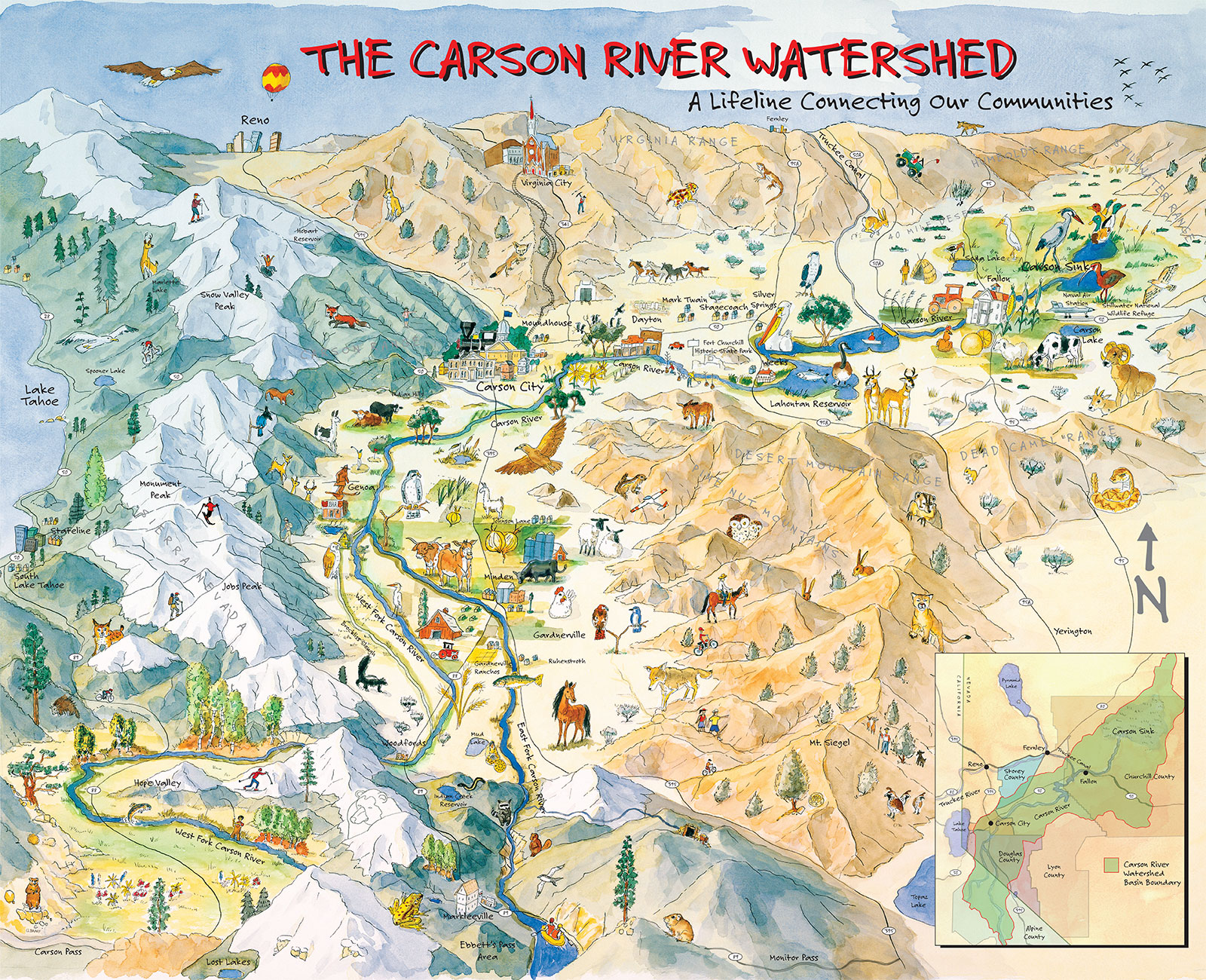
Markleeville CA.
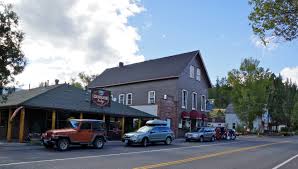 |
| Markleeville is located in Alpine County, the least populated county in the State of California. The community traces its beginnings to the land claim of Jacob Marklee in 1861. Marklee established a toll bridge across a tributary of the Carson River during the height of the silver mining boom at Silver Mountain City. When the mines closed, Markleeville assumed the county seat and to this day remains the center of government services for Alpine County. Markleeville served as a supply and shipping center for the mining, lumber and ranching industries for over one hundred years. Today, it is home to less than 200 residents and caters to numerous tourists who visit to enjoy and explore the beautiful alpine scenery and the wide variety of recreational opportunities. |
| Click Here for Alpine County’s website |
| Click Here for Alpine Chamber’s website |
| Click Here for Alpine Watershed Group’s website |
Woodfords CA.
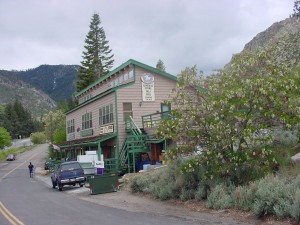 |
| Located in Alpine County, California near the Nevada border, Woodfords holds title as the oldest non-native settlement in the entire region. The area was first recorded as Brannan Springs and was considered an ideal location due to its proximity to the well-traveled California road. For a short while it was known as Carey’s Mill. In 1849, after the establishment of an official post office by Daniel Woodford, it became called Woodfords. Today the community is home to some 150 residents and serves the many travelers who pass through the area. |
| Click Here for Alpine County’s website |
| Click Here for Alpine Chamber’s website |
| Click Here for Friends of Hope Valley’s website |
Gardnerville Ranchos NV.
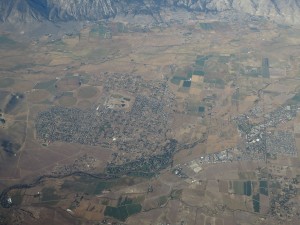 |
| The community of Gardnerville Ranchos provides housing for employees of the many casinos at South Lake Tahoe and the high-tech companies that have relocated to the Carson Valley. The surrounding mountain scenery and valley vistas provide for a quiet, comfortable community. |
| Click Here for Gardnerville’s Official Website website |
| Click Here for Gardnerville Ranchos General Improvement District’s website |
| Click Here for Carson Valley Chamber’s website |
Gardnerville NV.
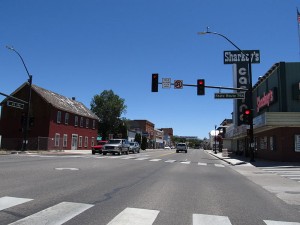 |
| Gardnerville, located in Carson Valley, Douglas County, Nevada was established in the 1860’s as a farming town. When the V&T Railroad extended its line south from Carson City in 1905 the train depot was built on the Dangberg family property located on the north side of town. Today Gardnerville is virtually fused with it neighbor Minden and provides a mixture of quaint family owned and operated shops, basque restaurants, and refurbished hotels. |
| Click Here for Gardnerville’s Official Website website |
| Click Here for Carson Valley Chamber’s Tourism website |
| Click Here for Carson Valley Chamber’s website |
Minden NV.
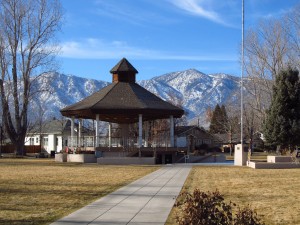 |
| Minden was established in 1905 when the V & T Railroad extended a line south from Carson City. Minden is located in Carson Valley, one of the most productive agricultural regions in Nevada and is the county seat for Douglas County. Minden began as a planned subdivision with a central park and a grid of quiet streets. Today Minden is still a picture postcard town with a turn of the century appearance. |
| Click Here for Carson Valley Chamber#8217;s Tourism website |
| Click Here for Carson Valley Chamber#8217;s website |
Genoa NV.
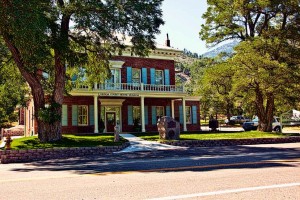 |
| Genoa was established as a trading post in 1851 to serve the wagon trains traveling between the open desert of the Great Basin and the Sierra Nevada Mountain range. The town is referred to as the oldest permanent settlement in Nevada. In 1854 the settlement was proclaimed the seat of Carson County, Utah territory, and in 1861 of Douglas County, Nevada. In 1916 the county seat was lost to Minden. In 1910 a fire devastated the community burning over half of the business district, the County Courthouse and the original Mormon Fort. Today there are about 50 original dwellings in the town including the oldest saloon in the state, the Genoa Bar. |
| Video Link Click Here |
| Click Here for Carson Valley Chamber’s Tourism website |
| Click Here for Carson Valley Chamber’s Tourism website |
| Click Here for Carson Valley ChamberRiver Fork Ranch’s website |
| Click Here for TNC River Fork Ranch’s website |
Indian Hills NV.
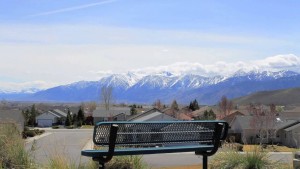 |
| TIndian Hills is small community located approximately five miles from Carson City in Douglas County, Nevada. The community enjoys the scenic beauty of Carson Valley plus the Sierra Nevada and Carson Mountain Ranges |
| Click Here for Indian Hills General Improvement District’s website |
| Click Here for James Lee Memorial Park’s website |
Carson City NV.
 |
| Carson City was founded as a community in 1858, seven years after the first settlement of Eagle Station trading post by ranchers. The city is named after Christopher Kit Carson, the famous frontiersman and scout. Founding Fathers include well-known names such as Curry, Proctor and Musser. Carson City was selected as the state capital at the constitutional convention in 1864 and has retained that honor ever since. |
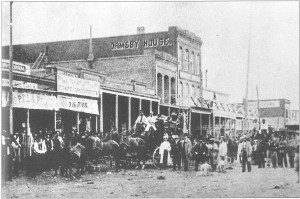 |
| Video Link Click Here |
| Video Link Click Here Carson City Flood |
| Click Here for Carson City’s website |
| Click Here for Carson City Visitors Bureau’s website |
| Click Here for Carson City’s Chamber website |
| Click Here for Citizens for a Walkable and Bikeable Carson City website |
Johnson Lane NV.
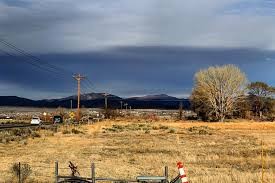 |
| Johnson Lane is a growing community located in the heart of Carson Valley, one of the oldest and richest agricultural areas in the State of Nevada. The patchwork valley produces food supplies and supports variety of livestock. Residents of the Johnson Lane area enjoy beautiful valley vistas and views of the surrounding snow-capped Sierra Nevada Mountains. |
| Video Link Click Here Johnson Lane flooding |
| Click Here for Carson Valley Chamber’s Tourism website |
| Click Here for Carson Valley Chamber’s website |
Ruhenstroth NV.
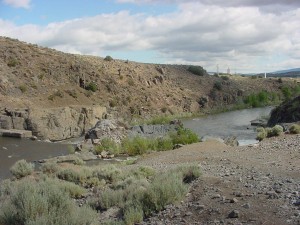 |
| The area known as Ruhenstroth is located in Douglas County, Nevada in the southwestern portion of the Pine Nut Mountains. The area contains at least 10 major paleontological zones. |
| Click Here for Carson Valley Chamber’s Tourism website |
| Click Here for Carson Valley Chamber’s website |
Mound House NV.
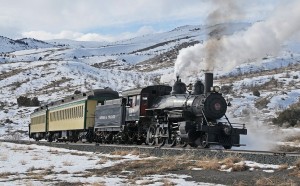 |
| Moundhouse was originally constructed in 1871 to serve as a station and siding for the Virginia and Truckee (V&T) Railroad. A post office was established in 1877 and in 1880 the V & T Railroad began construction of narrow gauge railroad from Moundhouse to mining camps in western Nevada and Owens Valley. This line was named the Carson & Colorado (C&C) and turned Moundhouse into a booming shipping point. When the C&C was abandoned in 1930’s Moundhouse all but disappeared. Today, Moundhouse offers housing options for employees of Carson City and other communities. |
| Video Link Click Here Historic V&T Railroad |
| Click Here for V & T Railroads website |
| Click Here for Lyon County’s Official website |
Dayton NV.
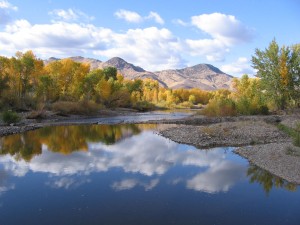 |
| Dayton is located in Lyon County, Nevada and claims to be the earliest settlement in the state. Originally called “Chinatown”, settlers were attracted to the area by the mining opportunities of the Comstock. Old Dayton is a quiet, quaint town reminiscent of a Nevada mining town. The Carson River flows through Dayton reminding residents of the importance and role that water has played in western history. | 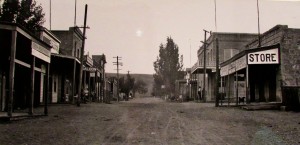 |
| Video Link Click Here Henry Yerington in Dayton |
| Video Link Click Here Dayton Flood |
| Click Here for Historical Society of Dayton Valley website |
| Click Here for Rriver Wranglers website |
| Click Here for Lyon County’s Official website |
| Click Here for Historical Society of Dayton Valley ’s website |
Stagecoach NV.
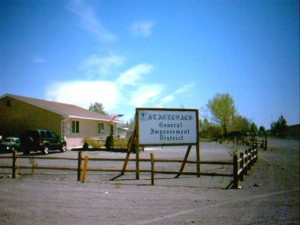 |
| Stagecoach is located on Highway 50 between Carson City and Fallon. A highway landmark for the town is the “Break-A’Heart” Saloon. Stagecoach is near Misfits Flats, named after the 1960 John Huston movie “The Misfits”. A wild horse roundup was filmed at the flats for this movie which was the last film made by Clark Gable and Marilyn Monroe. |
| Video Link Click Here |
| Click Here for Stagecoach General Improvement District’s website |
| Click Here for Lyon County’s Official website |
Silver Springs NV.
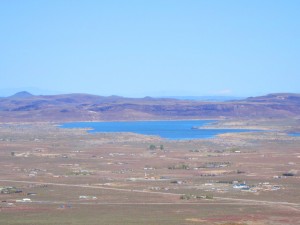 |
| Silver Springs, Nevada is located in Lyon County east of Reno and between Carson City and Fallon. This high desert community is near the Carson River and Lahontan Reservoir and only eight miles from Fort Churchill State Historic Park. The Silver Springs Airport provides air transportation and hanger space for flying enthusiasts. |
| Video Link Click Here |
| Click Here for Lahontan State Recreation Area’s website |
| Click Here for Lyon County’s Official website |
Fallon NV.
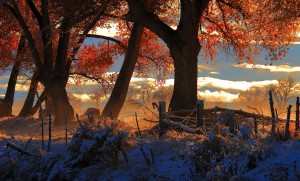 |
| Fallon traces its origins to 1896 when Mike Fallon built a crossroads store on his ranch property to serve the wagon trains. Near the same time the Virginia City to Fairview telegraph line was renovated linking the farms and ranches in the area. In 1902 the creation of the Truckee-Carson Irrigation District by the U.S. Reclamation Service and the construction of Newlands Irrigation Project prompted tremendous growth in the area and Fallon became the county seat for Churchill County. Fallon was incorporated in 1908. | 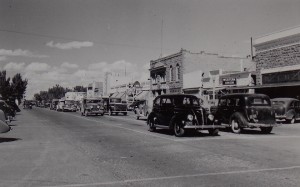 |
| Video Link Click Here |
| Video Link Click Here Discover Fallon! |
| Click Here for City of Fallon’s website |
| Click Here for Fallon Tourism Authority’s website |
| Click Here for Fallon Chamber of Commerce’s website |
| Click Here for Churchill County’s website |
Naval Air Station, Fallon NV.
 |
| When the Civil Aviation Administration and the Army Air Corps began construction of four airfields in the Nevada desert in 1942 the Naval Air Station Fallon was born. It was built as part of the Western Defense Program intended to repel an expected Japanese attack on the west coast. Over the years the station has grown to become one of the premier training sites for Navy and Marine Corps pilots and ground crews. |
| Video Link Click Here |
| Click Here for Naval Air Station Fallon’s website |
| Click Here for Churchill County’s website |
Virginia City NV
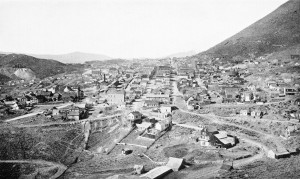 |
| Virginia City, located in Storey County, Nevada, is the largest federally designated Historical District in America. When gold was discovered in Six-Mile Canyon in 1857 Virginia City become the first industrial city in the west! The rich deposits of gold and silver ore turned the city into the most important settlement between Denver and San Francisco. Among notable residents were Mark Twain and Brete Harte. A fire in 1875 nearly destroyed the town but residents rebuilt the town in just one year! Gold and silver from the Comstock Lode yielded more than $400 million in gold and silver and remains the richest know U.S. silver deposit. Today the city retains the old west character and offers many opportunities for fun and education! |
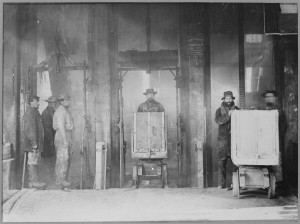 |
| Video Link Click Here |
| Video Link Click Here Modern Marvels |
| Click Here for Virgina City Tourism Authority’s website |
| Click Here for Storey County’s website |
Leviathan Mine CA.
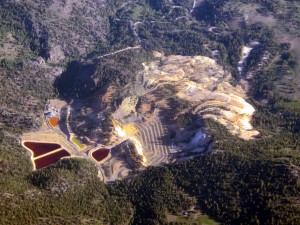 |
| Leviathan Mine is an inactive sulfur mine located in Alpine County, California on the eastern slope of the Sierra Nevada mountain range. The site covers about 250 acres and has been a source of water quality problems since the 1950’s. Operations began in 1863 for the purpose of extracting copper sulfate for processing silver ore in the Comstock mining region. Anaconda Company took over the mine in 1954 and transformed it into an open pit mine to extract sulfur ore. Over 22 million tons of overburden and waste rock were removed as a result. Anaconda sold the mine in 1962 to Alpine Mining Enterprises and the mine has been out of operation since that time. The site was formally declared a federal Superfund Site in 2000 and clean-up activities have been initiated. |
 |
| Video Link Click Here |
| Click Here for US Environmental Protection Agency ’s Leviathan Mine website |
| Click Here for California Water Board#8217;s website |
Sutro Tunnel NV.
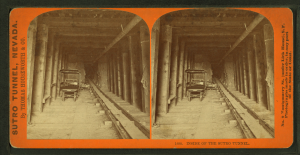 |
| Conceived by Adolph Sutro in 1860, the Sutro Tunnel was designed to drain steaming water from the Comstock mines. The tunnel begins near Dayton and extends underground for about four miles, surfacing at the base of the Virginia Range near Dayton. Over 2 billion gallons of water passed through the tunnel in 1880 alone and the tunnel continued to drain the mine shafts until 1940! A stream of water still flows from the tunnel today. |
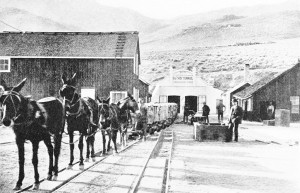 |
| Video Link Click Here |
| Click Here for Online Nevada Encyclopedia’s website |
| Click Here for Historical Society of Dayton Valley ’s website |
| Click Here for Lyon County’s Official website |
Fort Churchill Historic Park
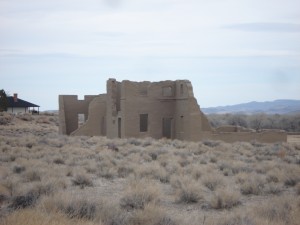 |
| Built in 1860, the U.S. Army desert outpost was established to guard early settlers. The facility also housed hundreds of soldiers between expeditions against local Indian tribes. Named after Sylvester Churchill the fort consists of adobe buildings erected on stone foundations. The fort was abandoned in 1869. The ruins are now part of the Nevada State Park system and are open to the public for exploration. | 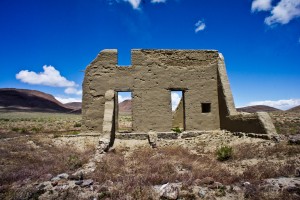 |
| Video Link Click Here |
| Video Link Click Here Quadcopter |
| Click Here for Nevada State Park’s website |
| Click Here for Churchill County’s website |
Mule Deer (Odocoileus hemionus)
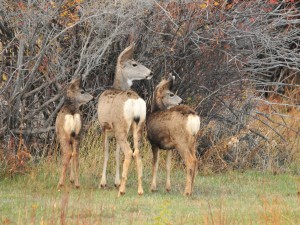 |
| The mule deer has large ears (like those of a mule) and tan to reddish brown fur in summer, grayish brown in winter with a white rump patch and a narrow black-tipped tail. Mule Deer move between various zones from the forest edges at higher elevations to the desert floor, depending on the season. Generally, they summer at higher elevations and winter at lower elevations, following the snow line. Mule deer occupy almost all types of habitat within their range, yet they seem to prefer arid, open areas and rocky hillsides. Areas with bitterbrush and sagebrush provide common habitat. Mature bucks tend to prefer rocky ridges for bedding grounds, while the doe and fawn is more likely to bed down in the open. |
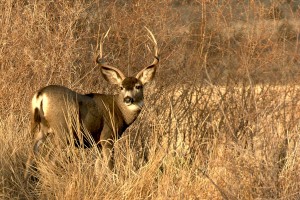 |
| Video Link Click Here |
| Click Here for Nevada Department of Wildlife’s website |
| Click Here for National Wildlife Federation’s website |
Great Basin Rattler (Crotalus viridus lotus)
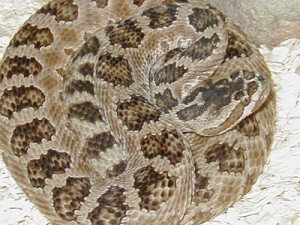 |
| The Great Basin Rattle Snake is a reptile that lives in rocky, brushy desert in Nevada. Adults can grow to about 4-5 feet in length and they feed on other reptiles, eggs, birds, and small mammals. Rattlesnakes use their tongues and pits in their heads to sense heat and vibration for finding food and avoiding danger. Shy and solitary, they tend to slither away and strike at people only when cornered or startled. |
| Video Link Click Here |
| Video Link Click Here |
| Click Here for National Park Service’s website |
| Click Here for U.S. Fish & Wildlife Service’s website |
Wild Horses (Equus ferus caballus)
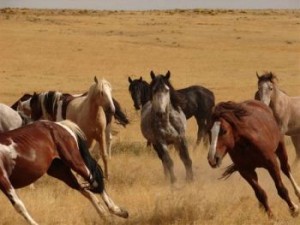 |
| Nevada is home to over 50 percent of the nation’s wild horses. Many of these horses are found in the Carson River Watershed, primarily in the Virginia Range Wild horses are considered by many to be living symbols of the historic and pioneer spirit of the west. |
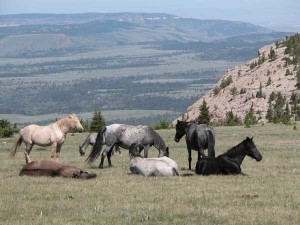 |
| Video Link Click Here |
| Video Link Click Here |
| Click Here for BLM Nevada State Office’s website |
Dead Camel Range
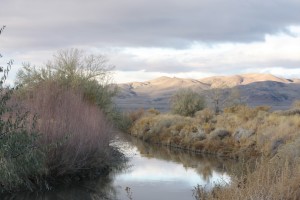 |
| The shores of Lahontan Reservoir form the western boundary of the Dead Camel Mountains, and Churchill Valley and the Desert Mountains bound the range on the south. The lower slopes of the Dead Camel Mountains were once under pluvial Lake Lahontan and are now dominated by saltbush communities. The higher elevations of the mountain range are dominated by scrublands. The Dead Camel Range is home to cottontail, pocket gophers, long-nosed leopard lizards, and striped whip snakes as well as other desert creatures that might visit the area. Lemmon buckwheat, a sensitive plant species, can be found in the range. Some 22 species of ancient plants have been identified in the area, including evergreen live oak (canyon live oak), white fir, paper birch, European aspen and Giant Sequoia. These species contrast dramatically with the vast, arid, Great Basin Desert in which their remnants have been found. |
| VClick Here dead camel story |
| Click Here for Plant Fossil’s website |
Lower Carson River
 |
| The lower Carson River exits Lahontan Reservoir through the spillway of Lahontan dam and flows down stream through the farmlands of Lahontan Valley. The river passes to the north of the City of Fallon, and on to the rivers end in the Carson Sink (Playa) and Desert. The lower Carson River brings water to ditches and canals that distribute irrigation water to farms in the Lahontan Valley as well as supplying water to the wetlands. |
| Video Link Click Here |
| VClick Here for NDOW’s website |
| Click Here for NDEP’s website |
Carson Sink
 |
| The Carson River passes through the Lahontan Valley and ends at the Carson Sink and Desert. Water from the irrigation of farmlands, below Lahontan Dam, flow down stream and reach wetland areas and the sink beyond. Depending on the time of year, annual precipitation and accumulated snow pack in the upper basin, the characteristics of this area can range from an extensive labyrinth of interconnected lakes, marshes, wetlands and aquatic environments to barren, alkali desert and salt flats. The entire basin represents the largest expanse of the ancient Ice Age Lake Lahontan, which covered the Lahontan Valley and Carson Sink to a maximum depth of approximately 700 feet. |
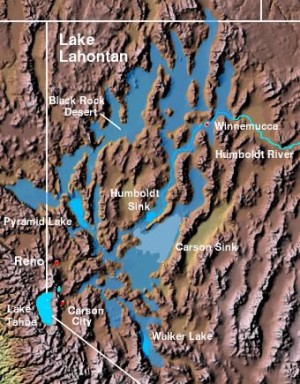 |
| Click Here for South West guide book’s website |
| Click Here for USGS’s website |
40 Mile Desert
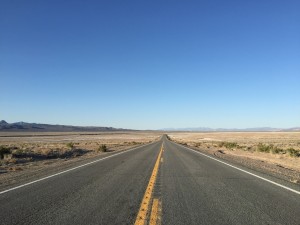 |
| The 40 Mile Desert extended from the Humboldt Sink to the Carson River, at Ragtown, located west of Fallon, Nevada. Located on the California Emigrant Trail, California bound travelers were forced to cross this desert devoid of forage and potable water in order to reach the Carson or Truckee Rivers. The loss of property, wagons, livestock, and human lives, was staggering in the early gold rush years. Sometimes called The Valley of the Shadow of Death, it was traveled by night, if possible, because of the great heat. |
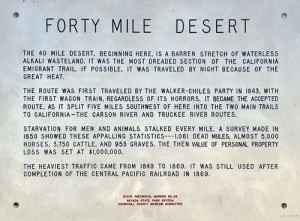 |
| Video Link Click Here |
| Click Here for Nevada Historic Marker’s website |
| Click Here for Dezert Magazine’s website |
Truckee Canal
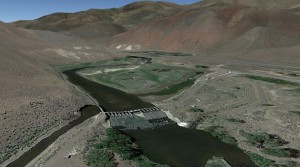 |
| Derby Dam, located on the lower Truckee River approximately 11 miles upstream from Wadsworth, Nevada, is the regulating structure by which Truckee River waters are diverted into the 32.5-mile long Truckee Canal. Construction on the Truckee Canal began in September of 1903, coincided with the construction of Derby Dam, and was completed in 1905. The Truckee Canal was built to carry a maximum flow of 1,500 cubic feet per second from Derby Dam to the Lahontan Reservoir through a combination of open trenches and concrete canals winding around rocky hillsides and over sandy wastes. The Truckee Canal flows past the City of Fernley supplying Truckee River water to that area. On down stream, the water from the Truckee River, by way of the Truckee Canal, combines with the water from Carson River to provide water to other Newlands Project farmers as well as to the wetlands in the Lahontan Valley. |
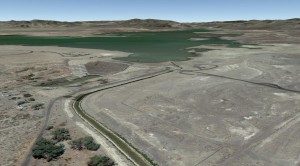 |
| Click Here for the City of Fernley’s website |
| Click Here for TCID’s website |
Stillwater Natural Wildlife Refuge
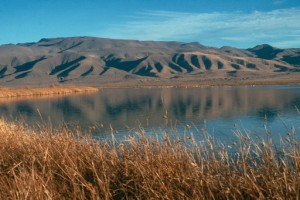 |
| The Stillwater Marshes, along with Carson Lake, are the core of the Lahontan Valley wetlands. Located along the Pacific Flyway, the Stillwater National Wildlife Refuge (NWR) provides outstanding bird watching opportunities and is located at the foot of the Stillwater Mountains. Stillwater NWR attracts more than 250,000 swans, geese and ducks annually, including more than 10,000 Tundra Swans and large numbers of Canvasbacks. Shorebird migration is also spectacular in numbers and peaks in April and August. Stillwater NWR attracts rare birds such as the Brown Pelican, Surf and White-winged Scoter, Pomerine Jaeger and Silt Sandpiper. Stillwater Natural Wildlife Refuge is open year round. |
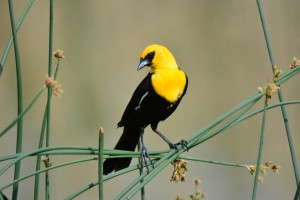 |
| Video Link Click Here |
| Video Link Click Here |
| Click Here for U.S. Fish & Wildlife Service’s website |
| Click Here for Friends of Stillwater’s website |
Carson Pass
Ebbets Pass
West Fork of Carson River
Brockliss Slough
Monitor Pass
Mount Siegel
Job’s Peak
Monument Peak
Spooner Lake
Marlette Lake
Hobart Reservoir
Carson Range
Pine Nut Mountains
Lake Tahoe
Virginia Range
East Fork of Carson River
Hope Valley
Snowshoeing
Bald Eagle (Haliaeetus leucocephalus)
 |
| The bald eagle is known as a sea or fish eagle and is found along rivers and coastlines where tall trees are available for nesting. Most of the bald eagles found in Nevada are wintering here, though occasionally, nesting pairs are found in the northern part of the state. From November through March, Carson Valley may have between 15 to 50 eagles in the area. The wingspan of an eagle may be up to nine feet! Previously listed as endangered due primarily to bioaccumulation of DDT pesticides, numbers have rebounded and they have been down-listed in most of their range. |
| Video Link Click Here |
| Click Here for Audubon’s website |
| Click Here for National Wildlife Federation’s website |
| Click Here for Eagles & Ag Event’s website |
California Gull (Larus californicus)
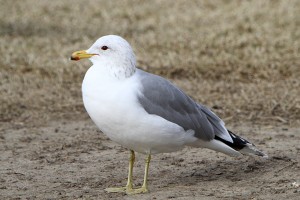 |
| The California Gull is distributed across rivers, ponds, lakes, and coastal areas of the western United States and Canada. The gull is medium sized with primarily white feathers and gray wings and back. The California Gull is the gull often seen in Nevada’s lakes and ponds. It’s native to Nevada and the state bird of Utah. In a natural setting, the California Gull feeds on small fish, insects, or raids the nests of other birds. This bird also feeds on scraps left by humans. |
| Click Here for Audubon’s website |
| Click Here for Cornell Lab of Ornithology’s website |
Bobcat (Felis rufus)
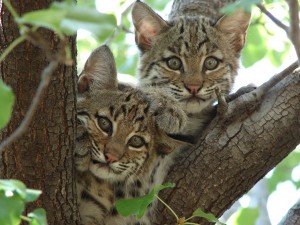 |
| Bobcats are found in almost all types of habitat especially in mountains and even in desert areas where water is available. The name Bobcat may have originated from its short tail, which is only 6 or 7 inches long. Bobcats are equipped to kill animals as large as deer. When living near a ranch, it may take lambs, poultry and even young pigs. However, food habit studies have shown Bobcats subsist on a diet of rabbits, ground squirrels, mice, pocket gophers and wood rats. |
| Click Here for Nevada Department of Wildlife’s website |
| Click Here for Defenders of Wildlife’s website |
North American Porcupine (Erethizon dorsatum)
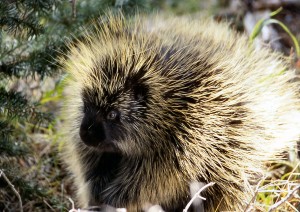 |
| The Porcupine is distributed throughout all the North American desert regions north to Canada. The North American Porcupine is a heavyset, short-legged, slow-moving rodent that is usually solitary, nocturnal, herbivorous, and spends much of its time in trees. The Porcupine's barbed quills detach easily and can become painfully embedded in the skin of an attacker. Not only do they inflict painful wounds, but they also work into the skin and may even cause death if they puncture vital organs or if the wounds become infected. |
| Click Here for Sandiego Zoo’s website |
| Click Here for Nature Work’s website |
 |
| The Porcupine is distributed throughout all the North American desert regions north to Canada. The North American Porcupine is a heavyset, short-legged, slow-moving rodent that is usually solitary, nocturnal, herbivorous, and spends much of its time in trees. The Porcupine's barbed quills detach easily and can become painfully embedded in the skin of an attacker. Not only do they inflict painful wounds, but they also work into the skin and may even cause death if they puncture vital organs or if the wounds become infected. |
| Click Here for Sandiego Zoo’s website |
| Click Here for Nature Work’s website |
 |
| The Porcupine is distributed throughout all the North American desert regions north to Canada. The North American Porcupine is a heavyset, short-legged, slow-moving rodent that is usually solitary, nocturnal, herbivorous, and spends much of its time in trees. The Porcupine's barbed quills detach easily and can become painfully embedded in the skin of an attacker. Not only do they inflict painful wounds, but they also work into the skin and may even cause death if they puncture vital organs or if the wounds become infected. |
| Click Here for Sandiego Zoo’s website |
| Click Here for Nature Work’s website |
 |
| The Porcupine is distributed throughout all the North American desert regions north to Canada. The North American Porcupine is a heavyset, short-legged, slow-moving rodent that is usually solitary, nocturnal, herbivorous, and spends much of its time in trees. The Porcupine's barbed quills detach easily and can become painfully embedded in the skin of an attacker. Not only do they inflict painful wounds, but they also work into the skin and may even cause death if they puncture vital organs or if the wounds become infected. |
| Click Here for Sandiego Zoo’s website |
| Click Here for Nature Work’s website |
 |
| The Porcupine is distributed throughout all the North American desert regions north to Canada. The North American Porcupine is a heavyset, short-legged, slow-moving rodent that is usually solitary, nocturnal, herbivorous, and spends much of its time in trees. The Porcupine's barbed quills detach easily and can become painfully embedded in the skin of an attacker. Not only do they inflict painful wounds, but they also work into the skin and may even cause death if they puncture vital organs or if the wounds become infected. |
| Click Here for Sandiego Zoo’s website |
| Click Here for Nature Work’s website |
 |
| The Porcupine is distributed throughout all the North American desert regions north to Canada. The North American Porcupine is a heavyset, short-legged, slow-moving rodent that is usually solitary, nocturnal, herbivorous, and spends much of its time in trees. The Porcupine's barbed quills detach easily and can become painfully embedded in the skin of an attacker. Not only do they inflict painful wounds, but they also work into the skin and may even cause death if they puncture vital organs or if the wounds become infected. |
| Click Here for Sandiego Zoo’s website |
| Click Here for Nature Work’s website |
 |
| The Porcupine is distributed throughout all the North American desert regions north to Canada. The North American Porcupine is a heavyset, short-legged, slow-moving rodent that is usually solitary, nocturnal, herbivorous, and spends much of its time in trees. The Porcupine's barbed quills detach easily and can become painfully embedded in the skin of an attacker. Not only do they inflict painful wounds, but they also work into the skin and may even cause death if they puncture vital organs or if the wounds become infected. |
| Click Here for Sandiego Zoo’s website |
| Click Here for Nature Work’s website |
 |
| The Porcupine is distributed throughout all the North American desert regions north to Canada. The North American Porcupine is a heavyset, short-legged, slow-moving rodent that is usually solitary, nocturnal, herbivorous, and spends much of its time in trees. The Porcupine's barbed quills detach easily and can become painfully embedded in the skin of an attacker. Not only do they inflict painful wounds, but they also work into the skin and may even cause death if they puncture vital organs or if the wounds become infected. |
| Click Here for Sandiego Zoo’s website |
| Click Here for Nature Work’s website |
 |
| The Porcupine is distributed throughout all the North American desert regions north to Canada. The North American Porcupine is a heavyset, short-legged, slow-moving rodent that is usually solitary, nocturnal, herbivorous, and spends much of its time in trees. The Porcupine's barbed quills detach easily and can become painfully embedded in the skin of an attacker. Not only do they inflict painful wounds, but they also work into the skin and may even cause death if they puncture vital organs or if the wounds become infected. |
| Click Here for Sandiego Zoo’s website |
| Click Here for Nature Work’s website |
 |
| The Porcupine is distributed throughout all the North American desert regions north to Canada. The North American Porcupine is a heavyset, short-legged, slow-moving rodent that is usually solitary, nocturnal, herbivorous, and spends much of its time in trees. The Porcupine's barbed quills detach easily and can become painfully embedded in the skin of an attacker. Not only do they inflict painful wounds, but they also work into the skin and may even cause death if they puncture vital organs or if the wounds become infected. |
| Click Here for Sandiego Zoo’s website |
| Click Here for Nature Work’s website |
 |
| The Porcupine is distributed throughout all the North American desert regions north to Canada. The North American Porcupine is a heavyset, short-legged, slow-moving rodent that is usually solitary, nocturnal, herbivorous, and spends much of its time in trees. The Porcupine's barbed quills detach easily and can become painfully embedded in the skin of an attacker. Not only do they inflict painful wounds, but they also work into the skin and may even cause death if they puncture vital organs or if the wounds become infected. |
| Click Here for Sandiego Zoo’s website |
| Click Here for Nature Work’s website |
 |
| The Porcupine is distributed throughout all the North American desert regions north to Canada. The North American Porcupine is a heavyset, short-legged, slow-moving rodent that is usually solitary, nocturnal, herbivorous, and spends much of its time in trees. The Porcupine's barbed quills detach easily and can become painfully embedded in the skin of an attacker. Not only do they inflict painful wounds, but they also work into the skin and may even cause death if they puncture vital organs or if the wounds become infected. |
| Click Here for Sandiego Zoo’s website |
| Click Here for Nature Work’s website |
 |
| The Porcupine is distributed throughout all the North American desert regions north to Canada. The North American Porcupine is a heavyset, short-legged, slow-moving rodent that is usually solitary, nocturnal, herbivorous, and spends much of its time in trees. The Porcupine's barbed quills detach easily and can become painfully embedded in the skin of an attacker. Not only do they inflict painful wounds, but they also work into the skin and may even cause death if they puncture vital organs or if the wounds become infected. |
| Click Here for Sandiego Zoo’s website |
| Click Here for Nature Work’s website |
 |
| The Porcupine is distributed throughout all the North American desert regions north to Canada. The North American Porcupine is a heavyset, short-legged, slow-moving rodent that is usually solitary, nocturnal, herbivorous, and spends much of its time in trees. The Porcupine's barbed quills detach easily and can become painfully embedded in the skin of an attacker. Not only do they inflict painful wounds, but they also work into the skin and may even cause death if they puncture vital organs or if the wounds become infected. |
| Click Here for Sandiego Zoo’s website |
| Click Here for Nature Work’s website |
 |
| The Porcupine is distributed throughout all the North American desert regions north to Canada. The North American Porcupine is a heavyset, short-legged, slow-moving rodent that is usually solitary, nocturnal, herbivorous, and spends much of its time in trees. The Porcupine's barbed quills detach easily and can become painfully embedded in the skin of an attacker. Not only do they inflict painful wounds, but they also work into the skin and may even cause death if they puncture vital organs or if the wounds become infected. |
| Click Here for Sandiego Zoo’s website |
| Click Here for Nature Work’s website |
 |
| The Porcupine is distributed throughout all the North American desert regions north to Canada. The North American Porcupine is a heavyset, short-legged, slow-moving rodent that is usually solitary, nocturnal, herbivorous, and spends much of its time in trees. The Porcupine's barbed quills detach easily and can become painfully embedded in the skin of an attacker. Not only do they inflict painful wounds, but they also work into the skin and may even cause death if they puncture vital organs or if the wounds become infected. |
| Click Here for Sandiego Zoo’s website |
| Click Here for Nature Work’s website |
 |
| The Porcupine is distributed throughout all the North American desert regions north to Canada. The North American Porcupine is a heavyset, short-legged, slow-moving rodent that is usually solitary, nocturnal, herbivorous, and spends much of its time in trees. The Porcupine's barbed quills detach easily and can become painfully embedded in the skin of an attacker. Not only do they inflict painful wounds, but they also work into the skin and may even cause death if they puncture vital organs or if the wounds become infected. |
| Click Here for Sandiego Zoo’s website |
| Click Here for Nature Work’s website |
 |
| The Porcupine is distributed throughout all the North American desert regions north to Canada. The North American Porcupine is a heavyset, short-legged, slow-moving rodent that is usually solitary, nocturnal, herbivorous, and spends much of its time in trees. The Porcupine's barbed quills detach easily and can become painfully embedded in the skin of an attacker. Not only do they inflict painful wounds, but they also work into the skin and may even cause death if they puncture vital organs or if the wounds become infected. |
| Click Here for Sandiego Zoo’s website |
| Click Here for Nature Work’s website |
 |
| The Porcupine is distributed throughout all the North American desert regions north to Canada. The North American Porcupine is a heavyset, short-legged, slow-moving rodent that is usually solitary, nocturnal, herbivorous, and spends much of its time in trees. The Porcupine's barbed quills detach easily and can become painfully embedded in the skin of an attacker. Not only do they inflict painful wounds, but they also work into the skin and may even cause death if they puncture vital organs or if the wounds become infected. |
| Click Here for Sandiego Zoo’s website |
| Click Here for Nature Work’s website |
 |
| The Porcupine is distributed throughout all the North American desert regions north to Canada. The North American Porcupine is a heavyset, short-legged, slow-moving rodent that is usually solitary, nocturnal, herbivorous, and spends much of its time in trees. The Porcupine's barbed quills detach easily and can become painfully embedded in the skin of an attacker. Not only do they inflict painful wounds, but they also work into the skin and may even cause death if they puncture vital organs or if the wounds become infected. |
| Click Here for Sandiego Zoo’s website |
| Click Here for Nature Work’s website |
 |
| The Porcupine is distributed throughout all the North American desert regions north to Canada. The North American Porcupine is a heavyset, short-legged, slow-moving rodent that is usually solitary, nocturnal, herbivorous, and spends much of its time in trees. The Porcupine's barbed quills detach easily and can become painfully embedded in the skin of an attacker. Not only do they inflict painful wounds, but they also work into the skin and may even cause death if they puncture vital organs or if the wounds become infected. |
| Click Here for Sandiego Zoo’s website |
| Click Here for Nature Work’s website |
 |
| The Porcupine is distributed throughout all the North American desert regions north to Canada. The North American Porcupine is a heavyset, short-legged, slow-moving rodent that is usually solitary, nocturnal, herbivorous, and spends much of its time in trees. The Porcupine's barbed quills detach easily and can become painfully embedded in the skin of an attacker. Not only do they inflict painful wounds, but they also work into the skin and may even cause death if they puncture vital organs or if the wounds become infected. |
| Click Here for Sandiego Zoo’s website |
| Click Here for Nature Work’s website |
 |
| The Porcupine is distributed throughout all the North American desert regions north to Canada. The North American Porcupine is a heavyset, short-legged, slow-moving rodent that is usually solitary, nocturnal, herbivorous, and spends much of its time in trees. The Porcupine's barbed quills detach easily and can become painfully embedded in the skin of an attacker. Not only do they inflict painful wounds, but they also work into the skin and may even cause death if they puncture vital organs or if the wounds become infected. |
| Click Here for Sandiego Zoo’s website |
| Click Here for Nature Work’s website |
 |
| The Porcupine is distributed throughout all the North American desert regions north to Canada. The North American Porcupine is a heavyset, short-legged, slow-moving rodent that is usually solitary, nocturnal, herbivorous, and spends much of its time in trees. The Porcupine's barbed quills detach easily and can become painfully embedded in the skin of an attacker. Not only do they inflict painful wounds, but they also work into the skin and may even cause death if they puncture vital organs or if the wounds become infected. |
| Click Here for Sandiego Zoo’s website |
| Click Here for Nature Work’s website |
 |
| The Porcupine is distributed throughout all the North American desert regions north to Canada. The North American Porcupine is a heavyset, short-legged, slow-moving rodent that is usually solitary, nocturnal, herbivorous, and spends much of its time in trees. The Porcupine's barbed quills detach easily and can become painfully embedded in the skin of an attacker. Not only do they inflict painful wounds, but they also work into the skin and may even cause death if they puncture vital organs or if the wounds become infected. |
| Click Here for Sandiego Zoo’s website |
| Click Here for Nature Work’s website |
 |
| The Porcupine is distributed throughout all the North American desert regions north to Canada. The North American Porcupine is a heavyset, short-legged, slow-moving rodent that is usually solitary, nocturnal, herbivorous, and spends much of its time in trees. The Porcupine's barbed quills detach easily and can become painfully embedded in the skin of an attacker. Not only do they inflict painful wounds, but they also work into the skin and may even cause death if they puncture vital organs or if the wounds become infected. |
| Click Here for Sandiego Zoo’s website |
| Click Here for Nature Work’s website |
 |
| The Porcupine is distributed throughout all the North American desert regions north to Canada. The North American Porcupine is a heavyset, short-legged, slow-moving rodent that is usually solitary, nocturnal, herbivorous, and spends much of its time in trees. The Porcupine's barbed quills detach easily and can become painfully embedded in the skin of an attacker. Not only do they inflict painful wounds, but they also work into the skin and may even cause death if they puncture vital organs or if the wounds become infected. |
| Click Here for Sandiego Zoo’s website |
| Click Here for Nature Work’s website |
 |
| The Porcupine is distributed throughout all the North American desert regions north to Canada. The North American Porcupine is a heavyset, short-legged, slow-moving rodent that is usually solitary, nocturnal, herbivorous, and spends much of its time in trees. The Porcupine's barbed quills detach easily and can become painfully embedded in the skin of an attacker. Not only do they inflict painful wounds, but they also work into the skin and may even cause death if they puncture vital organs or if the wounds become infected. |
| Click Here for Sandiego Zoo’s website |
| Click Here for Nature Work’s website |
 |
| The Porcupine is distributed throughout all the North American desert regions north to Canada. The North American Porcupine is a heavyset, short-legged, slow-moving rodent that is usually solitary, nocturnal, herbivorous, and spends much of its time in trees. The Porcupine's barbed quills detach easily and can become painfully embedded in the skin of an attacker. Not only do they inflict painful wounds, but they also work into the skin and may even cause death if they puncture vital organs or if the wounds become infected. |
| Click Here for Sandiego Zoo’s website |
| Click Here for Nature Work’s website |
 |
| The Porcupine is distributed throughout all the North American desert regions north to Canada. The North American Porcupine is a heavyset, short-legged, slow-moving rodent that is usually solitary, nocturnal, herbivorous, and spends much of its time in trees. The Porcupine's barbed quills detach easily and can become painfully embedded in the skin of an attacker. Not only do they inflict painful wounds, but they also work into the skin and may even cause death if they puncture vital organs or if the wounds become infected. |
| Click Here for Sandiego Zoo’s website |
| Click Here for Nature Work’s website |
 |
| The Porcupine is distributed throughout all the North American desert regions north to Canada. The North American Porcupine is a heavyset, short-legged, slow-moving rodent that is usually solitary, nocturnal, herbivorous, and spends much of its time in trees. The Porcupine's barbed quills detach easily and can become painfully embedded in the skin of an attacker. Not only do they inflict painful wounds, but they also work into the skin and may even cause death if they puncture vital organs or if the wounds become infected. |
| Click Here for Sandiego Zoo’s website |
| Click Here for Nature Work’s website |
 |
| The Porcupine is distributed throughout all the North American desert regions north to Canada. The North American Porcupine is a heavyset, short-legged, slow-moving rodent that is usually solitary, nocturnal, herbivorous, and spends much of its time in trees. The Porcupine's barbed quills detach easily and can become painfully embedded in the skin of an attacker. Not only do they inflict painful wounds, but they also work into the skin and may even cause death if they puncture vital organs or if the wounds become infected. |
| Click Here for Sandiego Zoo’s website |
| Click Here for Nature Work’s website |
 |
| The Porcupine is distributed throughout all the North American desert regions north to Canada. The North American Porcupine is a heavyset, short-legged, slow-moving rodent that is usually solitary, nocturnal, herbivorous, and spends much of its time in trees. The Porcupine's barbed quills detach easily and can become painfully embedded in the skin of an attacker. Not only do they inflict painful wounds, but they also work into the skin and may even cause death if they puncture vital organs or if the wounds become infected. |
| Click Here for Sandiego Zoo’s website |
| Click Here for Nature Work’s website |
 |
| The Porcupine is distributed throughout all the North American desert regions north to Canada. The North American Porcupine is a heavyset, short-legged, slow-moving rodent that is usually solitary, nocturnal, herbivorous, and spends much of its time in trees. The Porcupine's barbed quills detach easily and can become painfully embedded in the skin of an attacker. Not only do they inflict painful wounds, but they also work into the skin and may even cause death if they puncture vital organs or if the wounds become infected. |
| Click Here for Sandiego Zoo’s website |
| Click Here for Nature Work’s website |
 |
| The Porcupine is distributed throughout all the North American desert regions north to Canada. The North American Porcupine is a heavyset, short-legged, slow-moving rodent that is usually solitary, nocturnal, herbivorous, and spends much of its time in trees. The Porcupine's barbed quills detach easily and can become painfully embedded in the skin of an attacker. Not only do they inflict painful wounds, but they also work into the skin and may even cause death if they puncture vital organs or if the wounds become infected. |
| Click Here for Sandiego Zoo’s website |
| Click Here for Nature Work’s website |
 |
| The Porcupine is distributed throughout all the North American desert regions north to Canada. The North American Porcupine is a heavyset, short-legged, slow-moving rodent that is usually solitary, nocturnal, herbivorous, and spends much of its time in trees. The Porcupine's barbed quills detach easily and can become painfully embedded in the skin of an attacker. Not only do they inflict painful wounds, but they also work into the skin and may even cause death if they puncture vital organs or if the wounds become infected. |
| Click Here for Sandiego Zoo’s website |
| Click Here for Nature Work’s website |
 |
| The Porcupine is distributed throughout all the North American desert regions north to Canada. The North American Porcupine is a heavyset, short-legged, slow-moving rodent that is usually solitary, nocturnal, herbivorous, and spends much of its time in trees. The Porcupine's barbed quills detach easily and can become painfully embedded in the skin of an attacker. Not only do they inflict painful wounds, but they also work into the skin and may even cause death if they puncture vital organs or if the wounds become infected. |
| Click Here for Sandiego Zoo’s website |
| Click Here for Nature Work’s website |
 |
| The Porcupine is distributed throughout all the North American desert regions north to Canada. The North American Porcupine is a heavyset, short-legged, slow-moving rodent that is usually solitary, nocturnal, herbivorous, and spends much of its time in trees. The Porcupine's barbed quills detach easily and can become painfully embedded in the skin of an attacker. Not only do they inflict painful wounds, but they also work into the skin and may even cause death if they puncture vital organs or if the wounds become infected. |
| Click Here for Sandiego Zoo’s website |
| Click Here for Nature Work’s website |
 |
| The Porcupine is distributed throughout all the North American desert regions north to Canada. The North American Porcupine is a heavyset, short-legged, slow-moving rodent that is usually solitary, nocturnal, herbivorous, and spends much of its time in trees. The Porcupine's barbed quills detach easily and can become painfully embedded in the skin of an attacker. Not only do they inflict painful wounds, but they also work into the skin and may even cause death if they puncture vital organs or if the wounds become infected. |
| Click Here for Sandiego Zoo’s website |
| Click Here for Nature Work’s website |
 |
| The Porcupine is distributed throughout all the North American desert regions north to Canada. The North American Porcupine is a heavyset, short-legged, slow-moving rodent that is usually solitary, nocturnal, herbivorous, and spends much of its time in trees. The Porcupine's barbed quills detach easily and can become painfully embedded in the skin of an attacker. Not only do they inflict painful wounds, but they also work into the skin and may even cause death if they puncture vital organs or if the wounds become infected. |
| Click Here for Sandiego Zoo’s website |
| Click Here for Nature Work’s website |
 |
| The Porcupine is distributed throughout all the North American desert regions north to Canada. The North American Porcupine is a heavyset, short-legged, slow-moving rodent that is usually solitary, nocturnal, herbivorous, and spends much of its time in trees. The Porcupine's barbed quills detach easily and can become painfully embedded in the skin of an attacker. Not only do they inflict painful wounds, but they also work into the skin and may even cause death if they puncture vital organs or if the wounds become infected. |
| Click Here for Sandiego Zoo’s website |
| Click Here for Nature Work’s website |
 |
| The Porcupine is distributed throughout all the North American desert regions north to Canada. The North American Porcupine is a heavyset, short-legged, slow-moving rodent that is usually solitary, nocturnal, herbivorous, and spends much of its time in trees. The Porcupine's barbed quills detach easily and can become painfully embedded in the skin of an attacker. Not only do they inflict painful wounds, but they also work into the skin and may even cause death if they puncture vital organs or if the wounds become infected. |
| Click Here for Sandiego Zoo’s website |
| Click Here for Nature Work’s website |
 |
| The Porcupine is distributed throughout all the North American desert regions north to Canada. The North American Porcupine is a heavyset, short-legged, slow-moving rodent that is usually solitary, nocturnal, herbivorous, and spends much of its time in trees. The Porcupine's barbed quills detach easily and can become painfully embedded in the skin of an attacker. Not only do they inflict painful wounds, but they also work into the skin and may even cause death if they puncture vital organs or if the wounds become infected. |
| Click Here for Sandiego Zoo’s website |
| Click Here for Nature Work’s website |
 |
| The Porcupine is distributed throughout all the North American desert regions north to Canada. The North American Porcupine is a heavyset, short-legged, slow-moving rodent that is usually solitary, nocturnal, herbivorous, and spends much of its time in trees. The Porcupine's barbed quills detach easily and can become painfully embedded in the skin of an attacker. Not only do they inflict painful wounds, but they also work into the skin and may even cause death if they puncture vital organs or if the wounds become infected. |
| Click Here for Sandiego Zoo’s website |
| Click Here for Nature Work’s website |
 |
| The Porcupine is distributed throughout all the North American desert regions north to Canada. The North American Porcupine is a heavyset, short-legged, slow-moving rodent that is usually solitary, nocturnal, herbivorous, and spends much of its time in trees. The Porcupine's barbed quills detach easily and can become painfully embedded in the skin of an attacker. Not only do they inflict painful wounds, but they also work into the skin and may even cause death if they puncture vital organs or if the wounds become infected. |
| Click Here for Sandiego Zoo’s website |
| Click Here for Nature Work’s website |
 |
| The Porcupine is distributed throughout all the North American desert regions north to Canada. The North American Porcupine is a heavyset, short-legged, slow-moving rodent that is usually solitary, nocturnal, herbivorous, and spends much of its time in trees. The Porcupine's barbed quills detach easily and can become painfully embedded in the skin of an attacker. Not only do they inflict painful wounds, but they also work into the skin and may even cause death if they puncture vital organs or if the wounds become infected. |
| Click Here for Sandiego Zoo’s website |
| Click Here for Nature Work’s website |
 |
| The Porcupine is distributed throughout all the North American desert regions north to Canada. The North American Porcupine is a heavyset, short-legged, slow-moving rodent that is usually solitary, nocturnal, herbivorous, and spends much of its time in trees. The Porcupine's barbed quills detach easily and can become painfully embedded in the skin of an attacker. Not only do they inflict painful wounds, but they also work into the skin and may even cause death if they puncture vital organs or if the wounds become infected. |
| Click Here for Sandiego Zoo’s website |
| Click Here for Nature Work’s website |
 |
| The Porcupine is distributed throughout all the North American desert regions north to Canada. The North American Porcupine is a heavyset, short-legged, slow-moving rodent that is usually solitary, nocturnal, herbivorous, and spends much of its time in trees. The Porcupine's barbed quills detach easily and can become painfully embedded in the skin of an attacker. Not only do they inflict painful wounds, but they also work into the skin and may even cause death if they puncture vital organs or if the wounds become infected. |
| Click Here for Sandiego Zoo’s website |
| Click Here for Nature Work’s website |
 |
| The Porcupine is distributed throughout all the North American desert regions north to Canada. The North American Porcupine is a heavyset, short-legged, slow-moving rodent that is usually solitary, nocturnal, herbivorous, and spends much of its time in trees. The Porcupine's barbed quills detach easily and can become painfully embedded in the skin of an attacker. Not only do they inflict painful wounds, but they also work into the skin and may even cause death if they puncture vital organs or if the wounds become infected. |
| Click Here for Sandiego Zoo’s website |
| Click Here for Nature Work’s website |
 |
| The Porcupine is distributed throughout all the North American desert regions north to Canada. The North American Porcupine is a heavyset, short-legged, slow-moving rodent that is usually solitary, nocturnal, herbivorous, and spends much of its time in trees. The Porcupine's barbed quills detach easily and can become painfully embedded in the skin of an attacker. Not only do they inflict painful wounds, but they also work into the skin and may even cause death if they puncture vital organs or if the wounds become infected. |
| Click Here for Sandiego Zoo’s website |
| Click Here for Nature Work’s website |
 |
| The Porcupine is distributed throughout all the North American desert regions north to Canada. The North American Porcupine is a heavyset, short-legged, slow-moving rodent that is usually solitary, nocturnal, herbivorous, and spends much of its time in trees. The Porcupine's barbed quills detach easily and can become painfully embedded in the skin of an attacker. Not only do they inflict painful wounds, but they also work into the skin and may even cause death if they puncture vital organs or if the wounds become infected. |
| Click Here for Sandiego Zoo’s website |
| Click Here for Nature Work’s website |
 |
| The Porcupine is distributed throughout all the North American desert regions north to Canada. The North American Porcupine is a heavyset, short-legged, slow-moving rodent that is usually solitary, nocturnal, herbivorous, and spends much of its time in trees. The Porcupine's barbed quills detach easily and can become painfully embedded in the skin of an attacker. Not only do they inflict painful wounds, but they also work into the skin and may even cause death if they puncture vital organs or if the wounds become infected. |
| Click Here for Sandiego Zoo’s website |
| Click Here for Nature Work’s website |
 |
| The Porcupine is distributed throughout all the North American desert regions north to Canada. The North American Porcupine is a heavyset, short-legged, slow-moving rodent that is usually solitary, nocturnal, herbivorous, and spends much of its time in trees. The Porcupine's barbed quills detach easily and can become painfully embedded in the skin of an attacker. Not only do they inflict painful wounds, but they also work into the skin and may even cause death if they puncture vital organs or if the wounds become infected. |
| Click Here for Sandiego Zoo’s website |
| Click Here for Nature Work’s website |
 |
| The Porcupine is distributed throughout all the North American desert regions north to Canada. The North American Porcupine is a heavyset, short-legged, slow-moving rodent that is usually solitary, nocturnal, herbivorous, and spends much of its time in trees. The Porcupine's barbed quills detach easily and can become painfully embedded in the skin of an attacker. Not only do they inflict painful wounds, but they also work into the skin and may even cause death if they puncture vital organs or if the wounds become infected. |
| Click Here for Sandiego Zoo’s website |
| Click Here for Nature Work’s website |
 |
| The Porcupine is distributed throughout all the North American desert regions north to Canada. The North American Porcupine is a heavyset, short-legged, slow-moving rodent that is usually solitary, nocturnal, herbivorous, and spends much of its time in trees. The Porcupine's barbed quills detach easily and can become painfully embedded in the skin of an attacker. Not only do they inflict painful wounds, but they also work into the skin and may even cause death if they puncture vital organs or if the wounds become infected. |
| Click Here for Sandiego Zoo’s website |
| Click Here for Nature Work’s website |
 |
| The Porcupine is distributed throughout all the North American desert regions north to Canada. The North American Porcupine is a heavyset, short-legged, slow-moving rodent that is usually solitary, nocturnal, herbivorous, and spends much of its time in trees. The Porcupine's barbed quills detach easily and can become painfully embedded in the skin of an attacker. Not only do they inflict painful wounds, but they also work into the skin and may even cause death if they puncture vital organs or if the wounds become infected. |
| Click Here for Sandiego Zoo’s website |
| Click Here for Nature Work’s website |
 |
| The Porcupine is distributed throughout all the North American desert regions north to Canada. The North American Porcupine is a heavyset, short-legged, slow-moving rodent that is usually solitary, nocturnal, herbivorous, and spends much of its time in trees. The Porcupine's barbed quills detach easily and can become painfully embedded in the skin of an attacker. Not only do they inflict painful wounds, but they also work into the skin and may even cause death if they puncture vital organs or if the wounds become infected. |
| Click Here for Sandiego Zoo’s website |
| Click Here for Nature Work’s website |
 |
| The Porcupine is distributed throughout all the North American desert regions north to Canada. The North American Porcupine is a heavyset, short-legged, slow-moving rodent that is usually solitary, nocturnal, herbivorous, and spends much of its time in trees. The Porcupine's barbed quills detach easily and can become painfully embedded in the skin of an attacker. Not only do they inflict painful wounds, but they also work into the skin and may even cause death if they puncture vital organs or if the wounds become infected. |
| Click Here for Sandiego Zoo’s website |
| Click Here for Nature Work’s website |
 |
| The Porcupine is distributed throughout all the North American desert regions north to Canada. The North American Porcupine is a heavyset, short-legged, slow-moving rodent that is usually solitary, nocturnal, herbivorous, and spends much of its time in trees. The Porcupine's barbed quills detach easily and can become painfully embedded in the skin of an attacker. Not only do they inflict painful wounds, but they also work into the skin and may even cause death if they puncture vital organs or if the wounds become infected. |
| Click Here for Sandiego Zoo’s website |
| Click Here for Nature Work’s website |
 |
| The Porcupine is distributed throughout all the North American desert regions north to Canada. The North American Porcupine is a heavyset, short-legged, slow-moving rodent that is usually solitary, nocturnal, herbivorous, and spends much of its time in trees. The Porcupine's barbed quills detach easily and can become painfully embedded in the skin of an attacker. Not only do they inflict painful wounds, but they also work into the skin and may even cause death if they puncture vital organs or if the wounds become infected. |
| Click Here for Sandiego Zoo’s website |
| Click Here for Nature Work’s website |
 |
| The Porcupine is distributed throughout all the North American desert regions north to Canada. The North American Porcupine is a heavyset, short-legged, slow-moving rodent that is usually solitary, nocturnal, herbivorous, and spends much of its time in trees. The Porcupine's barbed quills detach easily and can become painfully embedded in the skin of an attacker. Not only do they inflict painful wounds, but they also work into the skin and may even cause death if they puncture vital organs or if the wounds become infected. |
| Click Here for Sandiego Zoo’s website |
| Click Here for Nature Work’s website |
 |
| The Porcupine is distributed throughout all the North American desert regions north to Canada. The North American Porcupine is a heavyset, short-legged, slow-moving rodent that is usually solitary, nocturnal, herbivorous, and spends much of its time in trees. The Porcupine's barbed quills detach easily and can become painfully embedded in the skin of an attacker. Not only do they inflict painful wounds, but they also work into the skin and may even cause death if they puncture vital organs or if the wounds become infected. |
| Click Here for Sandiego Zoo’s website |
| Click Here for Nature Work’s website |
 |
| The Porcupine is distributed throughout all the North American desert regions north to Canada. The North American Porcupine is a heavyset, short-legged, slow-moving rodent that is usually solitary, nocturnal, herbivorous, and spends much of its time in trees. The Porcupine's barbed quills detach easily and can become painfully embedded in the skin of an attacker. Not only do they inflict painful wounds, but they also work into the skin and may even cause death if they puncture vital organs or if the wounds become infected. |
| Click Here for Sandiego Zoo’s website |
| Click Here for Nature Work’s website |
 |
| The Porcupine is distributed throughout all the North American desert regions north to Canada. The North American Porcupine is a heavyset, short-legged, slow-moving rodent that is usually solitary, nocturnal, herbivorous, and spends much of its time in trees. The Porcupine's barbed quills detach easily and can become painfully embedded in the skin of an attacker. Not only do they inflict painful wounds, but they also work into the skin and may even cause death if they puncture vital organs or if the wounds become infected. |
| Click Here for Sandiego Zoo’s website |
| Click Here for Nature Work’s website |
 |
| The Porcupine is distributed throughout all the North American desert regions north to Canada. The North American Porcupine is a heavyset, short-legged, slow-moving rodent that is usually solitary, nocturnal, herbivorous, and spends much of its time in trees. The Porcupine's barbed quills detach easily and can become painfully embedded in the skin of an attacker. Not only do they inflict painful wounds, but they also work into the skin and may even cause death if they puncture vital organs or if the wounds become infected. |
| Click Here for Sandiego Zoo’s website |
| Click Here for Nature Work’s website |
 |
| The Porcupine is distributed throughout all the North American desert regions north to Canada. The North American Porcupine is a heavyset, short-legged, slow-moving rodent that is usually solitary, nocturnal, herbivorous, and spends much of its time in trees. The Porcupine's barbed quills detach easily and can become painfully embedded in the skin of an attacker. Not only do they inflict painful wounds, but they also work into the skin and may even cause death if they puncture vital organs or if the wounds become infected. |
| Click Here for Sandiego Zoo’s website |
| Click Here for Nature Work’s website |
 |
| The Porcupine is distributed throughout all the North American desert regions north to Canada. The North American Porcupine is a heavyset, short-legged, slow-moving rodent that is usually solitary, nocturnal, herbivorous, and spends much of its time in trees. The Porcupine's barbed quills detach easily and can become painfully embedded in the skin of an attacker. Not only do they inflict painful wounds, but they also work into the skin and may even cause death if they puncture vital organs or if the wounds become infected. |
| Click Here for Sandiego Zoo’s website |
| Click Here for Nature Work’s website |
 |
| The Porcupine is distributed throughout all the North American desert regions north to Canada. The North American Porcupine is a heavyset, short-legged, slow-moving rodent that is usually solitary, nocturnal, herbivorous, and spends much of its time in trees. The Porcupine's barbed quills detach easily and can become painfully embedded in the skin of an attacker. Not only do they inflict painful wounds, but they also work into the skin and may even cause death if they puncture vital organs or if the wounds become infected. |
| Click Here for Sandiego Zoo’s website |
| Click Here for Nature Work’s website |
 |
| The Porcupine is distributed throughout all the North American desert regions north to Canada. The North American Porcupine is a heavyset, short-legged, slow-moving rodent that is usually solitary, nocturnal, herbivorous, and spends much of its time in trees. The Porcupine's barbed quills detach easily and can become painfully embedded in the skin of an attacker. Not only do they inflict painful wounds, but they also work into the skin and may even cause death if they puncture vital organs or if the wounds become infected. |
| Click Here for Sandiego Zoo’s website |
| Click Here for Nature Work’s website |
 |
| The Porcupine is distributed throughout all the North American desert regions north to Canada. The North American Porcupine is a heavyset, short-legged, slow-moving rodent that is usually solitary, nocturnal, herbivorous, and spends much of its time in trees. The Porcupine's barbed quills detach easily and can become painfully embedded in the skin of an attacker. Not only do they inflict painful wounds, but they also work into the skin and may even cause death if they puncture vital organs or if the wounds become infected. |
| Click Here for Sandiego Zoo’s website |
| Click Here for Nature Work’s website |
 |
| The Porcupine is distributed throughout all the North American desert regions north to Canada. The North American Porcupine is a heavyset, short-legged, slow-moving rodent that is usually solitary, nocturnal, herbivorous, and spends much of its time in trees. The Porcupine's barbed quills detach easily and can become painfully embedded in the skin of an attacker. Not only do they inflict painful wounds, but they also work into the skin and may even cause death if they puncture vital organs or if the wounds become infected. |
| Click Here for Sandiego Zoo’s website |
| Click Here for Nature Work’s website |
 |
| The Porcupine is distributed throughout all the North American desert regions north to Canada. The North American Porcupine is a heavyset, short-legged, slow-moving rodent that is usually solitary, nocturnal, herbivorous, and spends much of its time in trees. The Porcupine's barbed quills detach easily and can become painfully embedded in the skin of an attacker. Not only do they inflict painful wounds, but they also work into the skin and may even cause death if they puncture vital organs or if the wounds become infected. |
| Click Here for Sandiego Zoo’s website |
| Click Here for Nature Work’s website |
 |
| The Porcupine is distributed throughout all the North American desert regions north to Canada. The North American Porcupine is a heavyset, short-legged, slow-moving rodent that is usually solitary, nocturnal, herbivorous, and spends much of its time in trees. The Porcupine's barbed quills detach easily and can become painfully embedded in the skin of an attacker. Not only do they inflict painful wounds, but they also work into the skin and may even cause death if they puncture vital organs or if the wounds become infected. |
| Click Here for Sandiego Zoo’s website |
| Click Here for Nature Work’s website |
 |
| The Porcupine is distributed throughout all the North American desert regions north to Canada. The North American Porcupine is a heavyset, short-legged, slow-moving rodent that is usually solitary, nocturnal, herbivorous, and spends much of its time in trees. The Porcupine's barbed quills detach easily and can become painfully embedded in the skin of an attacker. Not only do they inflict painful wounds, but they also work into the skin and may even cause death if they puncture vital organs or if the wounds become infected. |
| Click Here for Sandiego Zoo’s website |
| Click Here for Nature Work’s website |
 |
| The Porcupine is distributed throughout all the North American desert regions north to Canada. The North American Porcupine is a heavyset, short-legged, slow-moving rodent that is usually solitary, nocturnal, herbivorous, and spends much of its time in trees. The Porcupine's barbed quills detach easily and can become painfully embedded in the skin of an attacker. Not only do they inflict painful wounds, but they also work into the skin and may even cause death if they puncture vital organs or if the wounds become infected. |
| Click Here for Sandiego Zoo’s website |
| Click Here for Nature Work’s website |
 |
| The Porcupine is distributed throughout all the North American desert regions north to Canada. The North American Porcupine is a heavyset, short-legged, slow-moving rodent that is usually solitary, nocturnal, herbivorous, and spends much of its time in trees. The Porcupine's barbed quills detach easily and can become painfully embedded in the skin of an attacker. Not only do they inflict painful wounds, but they also work into the skin and may even cause death if they puncture vital organs or if the wounds become infected. |
| Click Here for Sandiego Zoo’s website |
| Click Here for Nature Work’s website |
 |
| The Porcupine is distributed throughout all the North American desert regions north to Canada. The North American Porcupine is a heavyset, short-legged, slow-moving rodent that is usually solitary, nocturnal, herbivorous, and spends much of its time in trees. The Porcupine's barbed quills detach easily and can become painfully embedded in the skin of an attacker. Not only do they inflict painful wounds, but they also work into the skin and may even cause death if they puncture vital organs or if the wounds become infected. |
| Click Here for Sandiego Zoo’s website |
| Click Here for Nature Work’s website |
 |
| The Porcupine is distributed throughout all the North American desert regions north to Canada. The North American Porcupine is a heavyset, short-legged, slow-moving rodent that is usually solitary, nocturnal, herbivorous, and spends much of its time in trees. The Porcupine's barbed quills detach easily and can become painfully embedded in the skin of an attacker. Not only do they inflict painful wounds, but they also work into the skin and may even cause death if they puncture vital organs or if the wounds become infected. |
| Click Here for Sandiego Zoo’s website |
| Click Here for Nature Work’s website |
 |
| The Porcupine is distributed throughout all the North American desert regions north to Canada. The North American Porcupine is a heavyset, short-legged, slow-moving rodent that is usually solitary, nocturnal, herbivorous, and spends much of its time in trees. The Porcupine's barbed quills detach easily and can become painfully embedded in the skin of an attacker. Not only do they inflict painful wounds, but they also work into the skin and may even cause death if they puncture vital organs or if the wounds become infected. |
| Click Here for Sandiego Zoo’s website |
| Click Here for Nature Work’s website |
 |
| The Porcupine is distributed throughout all the North American desert regions north to Canada. The North American Porcupine is a heavyset, short-legged, slow-moving rodent that is usually solitary, nocturnal, herbivorous, and spends much of its time in trees. The Porcupine's barbed quills detach easily and can become painfully embedded in the skin of an attacker. Not only do they inflict painful wounds, but they also work into the skin and may even cause death if they puncture vital organs or if the wounds become infected. |
| Click Here for Sandiego Zoo’s website |
| Click Here for Nature Work’s website |
 |
| The Porcupine is distributed throughout all the North American desert regions north to Canada. The North American Porcupine is a heavyset, short-legged, slow-moving rodent that is usually solitary, nocturnal, herbivorous, and spends much of its time in trees. The Porcupine's barbed quills detach easily and can become painfully embedded in the skin of an attacker. Not only do they inflict painful wounds, but they also work into the skin and may even cause death if they puncture vital organs or if the wounds become infected. |
| Click Here for Sandiego Zoo’s website |
| Click Here for Nature Work’s website |
 |
| The Porcupine is distributed throughout all the North American desert regions north to Canada. The North American Porcupine is a heavyset, short-legged, slow-moving rodent that is usually solitary, nocturnal, herbivorous, and spends much of its time in trees. The Porcupine's barbed quills detach easily and can become painfully embedded in the skin of an attacker. Not only do they inflict painful wounds, but they also work into the skin and may even cause death if they puncture vital organs or if the wounds become infected. |
| Click Here for Sandiego Zoo’s website |
| Click Here for Nature Work’s website |
 |
| The Porcupine is distributed throughout all the North American desert regions north to Canada. The North American Porcupine is a heavyset, short-legged, slow-moving rodent that is usually solitary, nocturnal, herbivorous, and spends much of its time in trees. The Porcupine's barbed quills detach easily and can become painfully embedded in the skin of an attacker. Not only do they inflict painful wounds, but they also work into the skin and may even cause death if they puncture vital organs or if the wounds become infected. |
| Click Here for Sandiego Zoo’s website |
| Click Here for Nature Work’s website |
 |
| The Porcupine is distributed throughout all the North American desert regions north to Canada. The North American Porcupine is a heavyset, short-legged, slow-moving rodent that is usually solitary, nocturnal, herbivorous, and spends much of its time in trees. The Porcupine's barbed quills detach easily and can become painfully embedded in the skin of an attacker. Not only do they inflict painful wounds, but they also work into the skin and may even cause death if they puncture vital organs or if the wounds become infected. |
| Click Here for Sandiego Zoo’s website |
| Click Here for Nature Work’s website |
 |
| The Porcupine is distributed throughout all the North American desert regions north to Canada. The North American Porcupine is a heavyset, short-legged, slow-moving rodent that is usually solitary, nocturnal, herbivorous, and spends much of its time in trees. The Porcupine's barbed quills detach easily and can become painfully embedded in the skin of an attacker. Not only do they inflict painful wounds, but they also work into the skin and may even cause death if they puncture vital organs or if the wounds become infected. |
| Click Here for Sandiego Zoo’s website |
| Click Here for Nature Work’s website |
 |
| The Porcupine is distributed throughout all the North American desert regions north to Canada. The North American Porcupine is a heavyset, short-legged, slow-moving rodent that is usually solitary, nocturnal, herbivorous, and spends much of its time in trees. The Porcupine's barbed quills detach easily and can become painfully embedded in the skin of an attacker. Not only do they inflict painful wounds, but they also work into the skin and may even cause death if they puncture vital organs or if the wounds become infected. |
| Click Here for Sandiego Zoo’s website |
| Click Here for Nature Work’s website |
 |
| The Porcupine is distributed throughout all the North American desert regions north to Canada. The North American Porcupine is a heavyset, short-legged, slow-moving rodent that is usually solitary, nocturnal, herbivorous, and spends much of its time in trees. The Porcupine's barbed quills detach easily and can become painfully embedded in the skin of an attacker. Not only do they inflict painful wounds, but they also work into the skin and may even cause death if they puncture vital organs or if the wounds become infected. |
| Click Here for Sandiego Zoo’s website |
| Click Here for Nature Work’s website |
 |
| The Porcupine is distributed throughout all the North American desert regions north to Canada. The North American Porcupine is a heavyset, short-legged, slow-moving rodent that is usually solitary, nocturnal, herbivorous, and spends much of its time in trees. The Porcupine's barbed quills detach easily and can become painfully embedded in the skin of an attacker. Not only do they inflict painful wounds, but they also work into the skin and may even cause death if they puncture vital organs or if the wounds become infected. |
| Click Here for Sandiego Zoo’s website |
| Click Here for Nature Work’s website |
 |
| The Porcupine is distributed throughout all the North American desert regions north to Canada. The North American Porcupine is a heavyset, short-legged, slow-moving rodent that is usually solitary, nocturnal, herbivorous, and spends much of its time in trees. The Porcupine's barbed quills detach easily and can become painfully embedded in the skin of an attacker. Not only do they inflict painful wounds, but they also work into the skin and may even cause death if they puncture vital organs or if the wounds become infected. |
| Click Here for Sandiego Zoo’s website |
| Click Here for Nature Work’s website |
 |
| The Porcupine is distributed throughout all the North American desert regions north to Canada. The North American Porcupine is a heavyset, short-legged, slow-moving rodent that is usually solitary, nocturnal, herbivorous, and spends much of its time in trees. The Porcupine's barbed quills detach easily and can become painfully embedded in the skin of an attacker. Not only do they inflict painful wounds, but they also work into the skin and may even cause death if they puncture vital organs or if the wounds become infected. |
| Click Here for Sandiego Zoo’s website |
| Click Here for Nature Work’s website |
 |
| The Porcupine is distributed throughout all the North American desert regions north to Canada. The North American Porcupine is a heavyset, short-legged, slow-moving rodent that is usually solitary, nocturnal, herbivorous, and spends much of its time in trees. The Porcupine's barbed quills detach easily and can become painfully embedded in the skin of an attacker. Not only do they inflict painful wounds, but they also work into the skin and may even cause death if they puncture vital organs or if the wounds become infected. |
| Click Here for Sandiego Zoo’s website |
| Click Here for Nature Work’s website |
 |
| The Porcupine is distributed throughout all the North American desert regions north to Canada. The North American Porcupine is a heavyset, short-legged, slow-moving rodent that is usually solitary, nocturnal, herbivorous, and spends much of its time in trees. The Porcupine's barbed quills detach easily and can become painfully embedded in the skin of an attacker. Not only do they inflict painful wounds, but they also work into the skin and may even cause death if they puncture vital organs or if the wounds become infected. |
| Click Here for Sandiego Zoo’s website |
| Click Here for Nature Work’s website |
 |
| The Porcupine is distributed throughout all the North American desert regions north to Canada. The North American Porcupine is a heavyset, short-legged, slow-moving rodent that is usually solitary, nocturnal, herbivorous, and spends much of its time in trees. The Porcupine's barbed quills detach easily and can become painfully embedded in the skin of an attacker. Not only do they inflict painful wounds, but they also work into the skin and may even cause death if they puncture vital organs or if the wounds become infected. |
| Click Here for Sandiego Zoo’s website |
| Click Here for Nature Work’s website |
 |
| The Porcupine is distributed throughout all the North American desert regions north to Canada. The North American Porcupine is a heavyset, short-legged, slow-moving rodent that is usually solitary, nocturnal, herbivorous, and spends much of its time in trees. The Porcupine's barbed quills detach easily and can become painfully embedded in the skin of an attacker. Not only do they inflict painful wounds, but they also work into the skin and may even cause death if they puncture vital organs or if the wounds become infected. |
| Click Here for Sandiego Zoo’s website |
| Click Here for Nature Work’s website |
 |
| The Porcupine is distributed throughout all the North American desert regions north to Canada. The North American Porcupine is a heavyset, short-legged, slow-moving rodent that is usually solitary, nocturnal, herbivorous, and spends much of its time in trees. The Porcupine's barbed quills detach easily and can become painfully embedded in the skin of an attacker. Not only do they inflict painful wounds, but they also work into the skin and may even cause death if they puncture vital organs or if the wounds become infected. |
| Click Here for Sandiego Zoo’s website |
| Click Here for Nature Work’s website |
 |
| The Porcupine is distributed throughout all the North American desert regions north to Canada. The North American Porcupine is a heavyset, short-legged, slow-moving rodent that is usually solitary, nocturnal, herbivorous, and spends much of its time in trees. The Porcupine's barbed quills detach easily and can become painfully embedded in the skin of an attacker. Not only do they inflict painful wounds, but they also work into the skin and may even cause death if they puncture vital organs or if the wounds become infected. |
| Click Here for Sandiego Zoo’s website |
| Click Here for Nature Work’s website |
 |
| The Porcupine is distributed throughout all the North American desert regions north to Canada. The North American Porcupine is a heavyset, short-legged, slow-moving rodent that is usually solitary, nocturnal, herbivorous, and spends much of its time in trees. The Porcupine's barbed quills detach easily and can become painfully embedded in the skin of an attacker. Not only do they inflict painful wounds, but they also work into the skin and may even cause death if they puncture vital organs or if the wounds become infected. |
| Click Here for Sandiego Zoo’s website |
| Click Here for Nature Work’s website |
 |
| The Porcupine is distributed throughout all the North American desert regions north to Canada. The North American Porcupine is a heavyset, short-legged, slow-moving rodent that is usually solitary, nocturnal, herbivorous, and spends much of its time in trees. The Porcupine's barbed quills detach easily and can become painfully embedded in the skin of an attacker. Not only do they inflict painful wounds, but they also work into the skin and may even cause death if they puncture vital organs or if the wounds become infected. |
| Click Here for Sandiego Zoo’s website |
| Click Here for Nature Work’s website |
 |
| The Porcupine is distributed throughout all the North American desert regions north to Canada. The North American Porcupine is a heavyset, short-legged, slow-moving rodent that is usually solitary, nocturnal, herbivorous, and spends much of its time in trees. The Porcupine's barbed quills detach easily and can become painfully embedded in the skin of an attacker. Not only do they inflict painful wounds, but they also work into the skin and may even cause death if they puncture vital organs or if the wounds become infected. |
| Click Here for Sandiego Zoo’s website |
| Click Here for Nature Work’s website |
 |
| The Porcupine is distributed throughout all the North American desert regions north to Canada. The North American Porcupine is a heavyset, short-legged, slow-moving rodent that is usually solitary, nocturnal, herbivorous, and spends much of its time in trees. The Porcupine's barbed quills detach easily and can become painfully embedded in the skin of an attacker. Not only do they inflict painful wounds, but they also work into the skin and may even cause death if they puncture vital organs or if the wounds become infected. |
| Click Here for Sandiego Zoo’s website |
| Click Here for Nature Work’s website |
 |
| The Porcupine is distributed throughout all the North American desert regions north to Canada. The North American Porcupine is a heavyset, short-legged, slow-moving rodent that is usually solitary, nocturnal, herbivorous, and spends much of its time in trees. The Porcupine's barbed quills detach easily and can become painfully embedded in the skin of an attacker. Not only do they inflict painful wounds, but they also work into the skin and may even cause death if they puncture vital organs or if the wounds become infected. |
| Click Here for Sandiego Zoo’s website |
| Click Here for Nature Work’s website |
 |
| The Porcupine is distributed throughout all the North American desert regions north to Canada. The North American Porcupine is a heavyset, short-legged, slow-moving rodent that is usually solitary, nocturnal, herbivorous, and spends much of its time in trees. The Porcupine's barbed quills detach easily and can become painfully embedded in the skin of an attacker. Not only do they inflict painful wounds, but they also work into the skin and may even cause death if they puncture vital organs or if the wounds become infected. |
| Click Here for Sandiego Zoo’s website |
| Click Here for Nature Work’s website |
 |
| The Porcupine is distributed throughout all the North American desert regions north to Canada. The North American Porcupine is a heavyset, short-legged, slow-moving rodent that is usually solitary, nocturnal, herbivorous, and spends much of its time in trees. The Porcupine's barbed quills detach easily and can become painfully embedded in the skin of an attacker. Not only do they inflict painful wounds, but they also work into the skin and may even cause death if they puncture vital organs or if the wounds become infected. |
| Click Here for Sandiego Zoo’s website |
| Click Here for Nature Work’s website |
 |
| The Porcupine is distributed throughout all the North American desert regions north to Canada. The North American Porcupine is a heavyset, short-legged, slow-moving rodent that is usually solitary, nocturnal, herbivorous, and spends much of its time in trees. The Porcupine's barbed quills detach easily and can become painfully embedded in the skin of an attacker. Not only do they inflict painful wounds, but they also work into the skin and may even cause death if they puncture vital organs or if the wounds become infected. |
| Click Here for Sandiego Zoo’s website |
| Click Here for Nature Work’s website |
 |
| The Porcupine is distributed throughout all the North American desert regions north to Canada. The North American Porcupine is a heavyset, short-legged, slow-moving rodent that is usually solitary, nocturnal, herbivorous, and spends much of its time in trees. The Porcupine's barbed quills detach easily and can become painfully embedded in the skin of an attacker. Not only do they inflict painful wounds, but they also work into the skin and may even cause death if they puncture vital organs or if the wounds become infected. |
| Click Here for Sandiego Zoo’s website |
| Click Here for Nature Work’s website |
 |
| The Porcupine is distributed throughout all the North American desert regions north to Canada. The North American Porcupine is a heavyset, short-legged, slow-moving rodent that is usually solitary, nocturnal, herbivorous, and spends much of its time in trees. The Porcupine's barbed quills detach easily and can become painfully embedded in the skin of an attacker. Not only do they inflict painful wounds, but they also work into the skin and may even cause death if they puncture vital organs or if the wounds become infected. |
| Click Here for Sandiego Zoo’s website |
| Click Here for Nature Work’s website |
 |
| The Porcupine is distributed throughout all the North American desert regions north to Canada. The North American Porcupine is a heavyset, short-legged, slow-moving rodent that is usually solitary, nocturnal, herbivorous, and spends much of its time in trees. The Porcupine's barbed quills detach easily and can become painfully embedded in the skin of an attacker. Not only do they inflict painful wounds, but they also work into the skin and may even cause death if they puncture vital organs or if the wounds become infected. |
| Click Here for Sandiego Zoo’s website |
| Click Here for Nature Work’s website |
 |
| The Porcupine is distributed throughout all the North American desert regions north to Canada. The North American Porcupine is a heavyset, short-legged, slow-moving rodent that is usually solitary, nocturnal, herbivorous, and spends much of its time in trees. The Porcupine's barbed quills detach easily and can become painfully embedded in the skin of an attacker. Not only do they inflict painful wounds, but they also work into the skin and may even cause death if they puncture vital organs or if the wounds become infected. |
| Click Here for Sandiego Zoo’s website |
| Click Here for Nature Work’s website |
 |
| The Porcupine is distributed throughout all the North American desert regions north to Canada. The North American Porcupine is a heavyset, short-legged, slow-moving rodent that is usually solitary, nocturnal, herbivorous, and spends much of its time in trees. The Porcupine's barbed quills detach easily and can become painfully embedded in the skin of an attacker. Not only do they inflict painful wounds, but they also work into the skin and may even cause death if they puncture vital organs or if the wounds become infected. |
| Click Here for Sandiego Zoo’s website |
| Click Here for Nature Work’s website |
 |
| The Porcupine is distributed throughout all the North American desert regions north to Canada. The North American Porcupine is a heavyset, short-legged, slow-moving rodent that is usually solitary, nocturnal, herbivorous, and spends much of its time in trees. The Porcupine's barbed quills detach easily and can become painfully embedded in the skin of an attacker. Not only do they inflict painful wounds, but they also work into the skin and may even cause death if they puncture vital organs or if the wounds become infected. |
| Click Here for Sandiego Zoo’s website |
| Click Here for Nature Work’s website |
 |
| The Porcupine is distributed throughout all the North American desert regions north to Canada. The North American Porcupine is a heavyset, short-legged, slow-moving rodent that is usually solitary, nocturnal, herbivorous, and spends much of its time in trees. The Porcupine's barbed quills detach easily and can become painfully embedded in the skin of an attacker. Not only do they inflict painful wounds, but they also work into the skin and may even cause death if they puncture vital organs or if the wounds become infected. |
| Click Here for Sandiego Zoo’s website |
| Click Here for Nature Work’s website |
 |
| The Porcupine is distributed throughout all the North American desert regions north to Canada. The North American Porcupine is a heavyset, short-legged, slow-moving rodent that is usually solitary, nocturnal, herbivorous, and spends much of its time in trees. The Porcupine's barbed quills detach easily and can become painfully embedded in the skin of an attacker. Not only do they inflict painful wounds, but they also work into the skin and may even cause death if they puncture vital organs or if the wounds become infected. |
| Click Here for Sandiego Zoo’s website |
| Click Here for Nature Work’s website |
 |
| The Porcupine is distributed throughout all the North American desert regions north to Canada. The North American Porcupine is a heavyset, short-legged, slow-moving rodent that is usually solitary, nocturnal, herbivorous, and spends much of its time in trees. The Porcupine's barbed quills detach easily and can become painfully embedded in the skin of an attacker. Not only do they inflict painful wounds, but they also work into the skin and may even cause death if they puncture vital organs or if the wounds become infected. |
| Click Here for Sandiego Zoo’s website |
| Click Here for Nature Work’s website |
 |
| The Porcupine is distributed throughout all the North American desert regions north to Canada. The North American Porcupine is a heavyset, short-legged, slow-moving rodent that is usually solitary, nocturnal, herbivorous, and spends much of its time in trees. The Porcupine's barbed quills detach easily and can become painfully embedded in the skin of an attacker. Not only do they inflict painful wounds, but they also work into the skin and may even cause death if they puncture vital organs or if the wounds become infected. |
| Click Here for Sandiego Zoo’s website |
| Click Here for Nature Work’s website |
 |
| The Porcupine is distributed throughout all the North American desert regions north to Canada. The North American Porcupine is a heavyset, short-legged, slow-moving rodent that is usually solitary, nocturnal, herbivorous, and spends much of its time in trees. The Porcupine's barbed quills detach easily and can become painfully embedded in the skin of an attacker. Not only do they inflict painful wounds, but they also work into the skin and may even cause death if they puncture vital organs or if the wounds become infected. |
| Click Here for Sandiego Zoo’s website |
| Click Here for Nature Work’s website |
 |
| The Porcupine is distributed throughout all the North American desert regions north to Canada. The North American Porcupine is a heavyset, short-legged, slow-moving rodent that is usually solitary, nocturnal, herbivorous, and spends much of its time in trees. The Porcupine's barbed quills detach easily and can become painfully embedded in the skin of an attacker. Not only do they inflict painful wounds, but they also work into the skin and may even cause death if they puncture vital organs or if the wounds become infected. |
| Click Here for Sandiego Zoo’s website |
| Click Here for Nature Work’s website |
 |
| The Porcupine is distributed throughout all the North American desert regions north to Canada. The North American Porcupine is a heavyset, short-legged, slow-moving rodent that is usually solitary, nocturnal, herbivorous, and spends much of its time in trees. The Porcupine's barbed quills detach easily and can become painfully embedded in the skin of an attacker. Not only do they inflict painful wounds, but they also work into the skin and may even cause death if they puncture vital organs or if the wounds become infected. |
| Click Here for Sandiego Zoo’s website |
| Click Here for Nature Work’s website |
 |
| The Porcupine is distributed throughout all the North American desert regions north to Canada. The North American Porcupine is a heavyset, short-legged, slow-moving rodent that is usually solitary, nocturnal, herbivorous, and spends much of its time in trees. The Porcupine's barbed quills detach easily and can become painfully embedded in the skin of an attacker. Not only do they inflict painful wounds, but they also work into the skin and may even cause death if they puncture vital organs or if the wounds become infected. |
| Click Here for Sandiego Zoo’s website |
| Click Here for Nature Work’s website |
 |
| The Porcupine is distributed throughout all the North American desert regions north to Canada. The North American Porcupine is a heavyset, short-legged, slow-moving rodent that is usually solitary, nocturnal, herbivorous, and spends much of its time in trees. The Porcupine's barbed quills detach easily and can become painfully embedded in the skin of an attacker. Not only do they inflict painful wounds, but they also work into the skin and may even cause death if they puncture vital organs or if the wounds become infected. |
| Click Here for Sandiego Zoo’s website |
| Click Here for Nature Work’s website |
 |
| The Porcupine is distributed throughout all the North American desert regions north to Canada. The North American Porcupine is a heavyset, short-legged, slow-moving rodent that is usually solitary, nocturnal, herbivorous, and spends much of its time in trees. The Porcupine's barbed quills detach easily and can become painfully embedded in the skin of an attacker. Not only do they inflict painful wounds, but they also work into the skin and may even cause death if they puncture vital organs or if the wounds become infected. |
| Click Here for Sandiego Zoo’s website |
| Click Here for Nature Work’s website |
 |
| The Porcupine is distributed throughout all the North American desert regions north to Canada. The North American Porcupine is a heavyset, short-legged, slow-moving rodent that is usually solitary, nocturnal, herbivorous, and spends much of its time in trees. The Porcupine's barbed quills detach easily and can become painfully embedded in the skin of an attacker. Not only do they inflict painful wounds, but they also work into the skin and may even cause death if they puncture vital organs or if the wounds become infected. |
| Click Here for Sandiego Zoo’s website |
| Click Here for Nature Work’s website |
 |
| The Porcupine is distributed throughout all the North American desert regions north to Canada. The North American Porcupine is a heavyset, short-legged, slow-moving rodent that is usually solitary, nocturnal, herbivorous, and spends much of its time in trees. The Porcupine's barbed quills detach easily and can become painfully embedded in the skin of an attacker. Not only do they inflict painful wounds, but they also work into the skin and may even cause death if they puncture vital organs or if the wounds become infected. |
| Click Here for Sandiego Zoo’s website |
| Click Here for Nature Work’s website |
 |
| The Porcupine is distributed throughout all the North American desert regions north to Canada. The North American Porcupine is a heavyset, short-legged, slow-moving rodent that is usually solitary, nocturnal, herbivorous, and spends much of its time in trees. The Porcupine's barbed quills detach easily and can become painfully embedded in the skin of an attacker. Not only do they inflict painful wounds, but they also work into the skin and may even cause death if they puncture vital organs or if the wounds become infected. |
| Click Here for Sandiego Zoo’s website |
| Click Here for Nature Work’s website |
 |
| The Porcupine is distributed throughout all the North American desert regions north to Canada. The North American Porcupine is a heavyset, short-legged, slow-moving rodent that is usually solitary, nocturnal, herbivorous, and spends much of its time in trees. The Porcupine's barbed quills detach easily and can become painfully embedded in the skin of an attacker. Not only do they inflict painful wounds, but they also work into the skin and may even cause death if they puncture vital organs or if the wounds become infected. |
| Click Here for Sandiego Zoo’s website |
| Click Here for Nature Work’s website |
 |
| The Porcupine is distributed throughout all the North American desert regions north to Canada. The North American Porcupine is a heavyset, short-legged, slow-moving rodent that is usually solitary, nocturnal, herbivorous, and spends much of its time in trees. The Porcupine's barbed quills detach easily and can become painfully embedded in the skin of an attacker. Not only do they inflict painful wounds, but they also work into the skin and may even cause death if they puncture vital organs or if the wounds become infected. |
| Click Here for Sandiego Zoo’s website |
| Click Here for Nature Work’s website |
 |
| The Porcupine is distributed throughout all the North American desert regions north to Canada. The North American Porcupine is a heavyset, short-legged, slow-moving rodent that is usually solitary, nocturnal, herbivorous, and spends much of its time in trees. The Porcupine's barbed quills detach easily and can become painfully embedded in the skin of an attacker. Not only do they inflict painful wounds, but they also work into the skin and may even cause death if they puncture vital organs or if the wounds become infected. |
| Click Here for Sandiego Zoo’s website |
| Click Here for Nature Work’s website |
 |
| The Porcupine is distributed throughout all the North American desert regions north to Canada. The North American Porcupine is a heavyset, short-legged, slow-moving rodent that is usually solitary, nocturnal, herbivorous, and spends much of its time in trees. The Porcupine's barbed quills detach easily and can become painfully embedded in the skin of an attacker. Not only do they inflict painful wounds, but they also work into the skin and may even cause death if they puncture vital organs or if the wounds become infected. |
| Click Here for Sandiego Zoo’s website |
| Click Here for Nature Work’s website |
 |
| The Porcupine is distributed throughout all the North American desert regions north to Canada. The North American Porcupine is a heavyset, short-legged, slow-moving rodent that is usually solitary, nocturnal, herbivorous, and spends much of its time in trees. The Porcupine's barbed quills detach easily and can become painfully embedded in the skin of an attacker. Not only do they inflict painful wounds, but they also work into the skin and may even cause death if they puncture vital organs or if the wounds become infected. |
| Click Here for Sandiego Zoo’s website |
| Click Here for Nature Work’s website |
 |
| The Porcupine is distributed throughout all the North American desert regions north to Canada. The North American Porcupine is a heavyset, short-legged, slow-moving rodent that is usually solitary, nocturnal, herbivorous, and spends much of its time in trees. The Porcupine's barbed quills detach easily and can become painfully embedded in the skin of an attacker. Not only do they inflict painful wounds, but they also work into the skin and may even cause death if they puncture vital organs or if the wounds become infected. |
| Click Here for Sandiego Zoo’s website |
| Click Here for Nature Work’s website |
 |
| The Porcupine is distributed throughout all the North American desert regions north to Canada. The North American Porcupine is a heavyset, short-legged, slow-moving rodent that is usually solitary, nocturnal, herbivorous, and spends much of its time in trees. The Porcupine's barbed quills detach easily and can become painfully embedded in the skin of an attacker. Not only do they inflict painful wounds, but they also work into the skin and may even cause death if they puncture vital organs or if the wounds become infected. |
| Click Here for Sandiego Zoo’s website |
| Click Here for Nature Work’s website |
 |
| The Porcupine is distributed throughout all the North American desert regions north to Canada. The North American Porcupine is a heavyset, short-legged, slow-moving rodent that is usually solitary, nocturnal, herbivorous, and spends much of its time in trees. The Porcupine's barbed quills detach easily and can become painfully embedded in the skin of an attacker. Not only do they inflict painful wounds, but they also work into the skin and may even cause death if they puncture vital organs or if the wounds become infected. |
| Click Here for Sandiego Zoo’s website |
| Click Here for Nature Work’s website |
 |
| The Porcupine is distributed throughout all the North American desert regions north to Canada. The North American Porcupine is a heavyset, short-legged, slow-moving rodent that is usually solitary, nocturnal, herbivorous, and spends much of its time in trees. The Porcupine's barbed quills detach easily and can become painfully embedded in the skin of an attacker. Not only do they inflict painful wounds, but they also work into the skin and may even cause death if they puncture vital organs or if the wounds become infected. |
| Click Here for Sandiego Zoo’s website |
| Click Here for Nature Work’s website |
 |
| The Porcupine is distributed throughout all the North American desert regions north to Canada. The North American Porcupine is a heavyset, short-legged, slow-moving rodent that is usually solitary, nocturnal, herbivorous, and spends much of its time in trees. The Porcupine's barbed quills detach easily and can become painfully embedded in the skin of an attacker. Not only do they inflict painful wounds, but they also work into the skin and may even cause death if they puncture vital organs or if the wounds become infected. |
| Click Here for Sandiego Zoo’s website |
| Click Here for Nature Work’s website |
 |
| The Porcupine is distributed throughout all the North American desert regions north to Canada. The North American Porcupine is a heavyset, short-legged, slow-moving rodent that is usually solitary, nocturnal, herbivorous, and spends much of its time in trees. The Porcupine's barbed quills detach easily and can become painfully embedded in the skin of an attacker. Not only do they inflict painful wounds, but they also work into the skin and may even cause death if they puncture vital organs or if the wounds become infected. |
| Click Here for Sandiego Zoo’s website |
| Click Here for Nature Work’s website |
 |
| The Porcupine is distributed throughout all the North American desert regions north to Canada. The North American Porcupine is a heavyset, short-legged, slow-moving rodent that is usually solitary, nocturnal, herbivorous, and spends much of its time in trees. The Porcupine's barbed quills detach easily and can become painfully embedded in the skin of an attacker. Not only do they inflict painful wounds, but they also work into the skin and may even cause death if they puncture vital organs or if the wounds become infected. |
| Click Here for Sandiego Zoo’s website |
| Click Here for Nature Work’s website |
 |
| The Porcupine is distributed throughout all the North American desert regions north to Canada. The North American Porcupine is a heavyset, short-legged, slow-moving rodent that is usually solitary, nocturnal, herbivorous, and spends much of its time in trees. The Porcupine's barbed quills detach easily and can become painfully embedded in the skin of an attacker. Not only do they inflict painful wounds, but they also work into the skin and may even cause death if they puncture vital organs or if the wounds become infected. |
| Click Here for Sandiego Zoo’s website |
| Click Here for Nature Work’s website |
 |
| The Porcupine is distributed throughout all the North American desert regions north to Canada. The North American Porcupine is a heavyset, short-legged, slow-moving rodent that is usually solitary, nocturnal, herbivorous, and spends much of its time in trees. The Porcupine's barbed quills detach easily and can become painfully embedded in the skin of an attacker. Not only do they inflict painful wounds, but they also work into the skin and may even cause death if they puncture vital organs or if the wounds become infected. |
| Click Here for Sandiego Zoo’s website |
| Click Here for Nature Work’s website |
 |
| The Porcupine is distributed throughout all the North American desert regions north to Canada. The North American Porcupine is a heavyset, short-legged, slow-moving rodent that is usually solitary, nocturnal, herbivorous, and spends much of its time in trees. The Porcupine's barbed quills detach easily and can become painfully embedded in the skin of an attacker. Not only do they inflict painful wounds, but they also work into the skin and may even cause death if they puncture vital organs or if the wounds become infected. |
| Click Here for Sandiego Zoo’s website |
| Click Here for Nature Work’s website |
 |
| The Porcupine is distributed throughout all the North American desert regions north to Canada. The North American Porcupine is a heavyset, short-legged, slow-moving rodent that is usually solitary, nocturnal, herbivorous, and spends much of its time in trees. The Porcupine's barbed quills detach easily and can become painfully embedded in the skin of an attacker. Not only do they inflict painful wounds, but they also work into the skin and may even cause death if they puncture vital organs or if the wounds become infected. |
| Click Here for Sandiego Zoo’s website |
| Click Here for Nature Work’s website |
 |
| The Porcupine is distributed throughout all the North American desert regions north to Canada. The North American Porcupine is a heavyset, short-legged, slow-moving rodent that is usually solitary, nocturnal, herbivorous, and spends much of its time in trees. The Porcupine's barbed quills detach easily and can become painfully embedded in the skin of an attacker. Not only do they inflict painful wounds, but they also work into the skin and may even cause death if they puncture vital organs or if the wounds become infected. |
| Click Here for Sandiego Zoo’s website |
| Click Here for Nature Work’s website |
 |
| The Porcupine is distributed throughout all the North American desert regions north to Canada. The North American Porcupine is a heavyset, short-legged, slow-moving rodent that is usually solitary, nocturnal, herbivorous, and spends much of its time in trees. The Porcupine's barbed quills detach easily and can become painfully embedded in the skin of an attacker. Not only do they inflict painful wounds, but they also work into the skin and may even cause death if they puncture vital organs or if the wounds become infected. |
| Click Here for Sandiego Zoo’s website |
| Click Here for Nature Work’s website |
 |
| The Porcupine is distributed throughout all the North American desert regions north to Canada. The North American Porcupine is a heavyset, short-legged, slow-moving rodent that is usually solitary, nocturnal, herbivorous, and spends much of its time in trees. The Porcupine's barbed quills detach easily and can become painfully embedded in the skin of an attacker. Not only do they inflict painful wounds, but they also work into the skin and may even cause death if they puncture vital organs or if the wounds become infected. |
| Click Here for Sandiego Zoo’s website |
| Click Here for Nature Work’s website |
 |
| The Porcupine is distributed throughout all the North American desert regions north to Canada. The North American Porcupine is a heavyset, short-legged, slow-moving rodent that is usually solitary, nocturnal, herbivorous, and spends much of its time in trees. The Porcupine's barbed quills detach easily and can become painfully embedded in the skin of an attacker. Not only do they inflict painful wounds, but they also work into the skin and may even cause death if they puncture vital organs or if the wounds become infected. |
| Click Here for Sandiego Zoo’s website |
| Click Here for Nature Work’s website |
 |
| The Porcupine is distributed throughout all the North American desert regions north to Canada. The North American Porcupine is a heavyset, short-legged, slow-moving rodent that is usually solitary, nocturnal, herbivorous, and spends much of its time in trees. The Porcupine's barbed quills detach easily and can become painfully embedded in the skin of an attacker. Not only do they inflict painful wounds, but they also work into the skin and may even cause death if they puncture vital organs or if the wounds become infected. |
| Click Here for Sandiego Zoo’s website |
| Click Here for Nature Work’s website |
 |
| The Porcupine is distributed throughout all the North American desert regions north to Canada. The North American Porcupine is a heavyset, short-legged, slow-moving rodent that is usually solitary, nocturnal, herbivorous, and spends much of its time in trees. The Porcupine's barbed quills detach easily and can become painfully embedded in the skin of an attacker. Not only do they inflict painful wounds, but they also work into the skin and may even cause death if they puncture vital organs or if the wounds become infected. |
| Click Here for Sandiego Zoo’s website |
| Click Here for Nature Work’s website |
 |
| The Porcupine is distributed throughout all the North American desert regions north to Canada. The North American Porcupine is a heavyset, short-legged, slow-moving rodent that is usually solitary, nocturnal, herbivorous, and spends much of its time in trees. The Porcupine's barbed quills detach easily and can become painfully embedded in the skin of an attacker. Not only do they inflict painful wounds, but they also work into the skin and may even cause death if they puncture vital organs or if the wounds become infected. |
| Click Here for Sandiego Zoo’s website |
| Click Here for Nature Work’s website |
 |
| The Porcupine is distributed throughout all the North American desert regions north to Canada. The North American Porcupine is a heavyset, short-legged, slow-moving rodent that is usually solitary, nocturnal, herbivorous, and spends much of its time in trees. The Porcupine's barbed quills detach easily and can become painfully embedded in the skin of an attacker. Not only do they inflict painful wounds, but they also work into the skin and may even cause death if they puncture vital organs or if the wounds become infected. |
| Click Here for Sandiego Zoo’s website |
| Click Here for Nature Work’s website |
 |
| The Porcupine is distributed throughout all the North American desert regions north to Canada. The North American Porcupine is a heavyset, short-legged, slow-moving rodent that is usually solitary, nocturnal, herbivorous, and spends much of its time in trees. The Porcupine's barbed quills detach easily and can become painfully embedded in the skin of an attacker. Not only do they inflict painful wounds, but they also work into the skin and may even cause death if they puncture vital organs or if the wounds become infected. |
| Click Here for Sandiego Zoo’s website |
| Click Here for Nature Work’s website |
 |
| The Porcupine is distributed throughout all the North American desert regions north to Canada. The North American Porcupine is a heavyset, short-legged, slow-moving rodent that is usually solitary, nocturnal, herbivorous, and spends much of its time in trees. The Porcupine's barbed quills detach easily and can become painfully embedded in the skin of an attacker. Not only do they inflict painful wounds, but they also work into the skin and may even cause death if they puncture vital organs or if the wounds become infected. |
| Click Here for Sandiego Zoo’s website |
| Click Here for Nature Work’s website |
 |
| The Porcupine is distributed throughout all the North American desert regions north to Canada. The North American Porcupine is a heavyset, short-legged, slow-moving rodent that is usually solitary, nocturnal, herbivorous, and spends much of its time in trees. The Porcupine's barbed quills detach easily and can become painfully embedded in the skin of an attacker. Not only do they inflict painful wounds, but they also work into the skin and may even cause death if they puncture vital organs or if the wounds become infected. |
| Click Here for Sandiego Zoo’s website |
| Click Here for Nature Work’s website |
 |
| The Porcupine is distributed throughout all the North American desert regions north to Canada. The North American Porcupine is a heavyset, short-legged, slow-moving rodent that is usually solitary, nocturnal, herbivorous, and spends much of its time in trees. The Porcupine's barbed quills detach easily and can become painfully embedded in the skin of an attacker. Not only do they inflict painful wounds, but they also work into the skin and may even cause death if they puncture vital organs or if the wounds become infected. |
| Click Here for Sandiego Zoo’s website |
| Click Here for Nature Work’s website |
 |
| The Porcupine is distributed throughout all the North American desert regions north to Canada. The North American Porcupine is a heavyset, short-legged, slow-moving rodent that is usually solitary, nocturnal, herbivorous, and spends much of its time in trees. The Porcupine's barbed quills detach easily and can become painfully embedded in the skin of an attacker. Not only do they inflict painful wounds, but they also work into the skin and may even cause death if they puncture vital organs or if the wounds become infected. |
| Click Here for Sandiego Zoo’s website |
| Click Here for Nature Work’s website |
 |
| The Porcupine is distributed throughout all the North American desert regions north to Canada. The North American Porcupine is a heavyset, short-legged, slow-moving rodent that is usually solitary, nocturnal, herbivorous, and spends much of its time in trees. The Porcupine's barbed quills detach easily and can become painfully embedded in the skin of an attacker. Not only do they inflict painful wounds, but they also work into the skin and may even cause death if they puncture vital organs or if the wounds become infected. |
| Click Here for Sandiego Zoo’s website |
| Click Here for Nature Work’s website |
 |
| The Porcupine is distributed throughout all the North American desert regions north to Canada. The North American Porcupine is a heavyset, short-legged, slow-moving rodent that is usually solitary, nocturnal, herbivorous, and spends much of its time in trees. The Porcupine's barbed quills detach easily and can become painfully embedded in the skin of an attacker. Not only do they inflict painful wounds, but they also work into the skin and may even cause death if they puncture vital organs or if the wounds become infected. |
| Click Here for Sandiego Zoo’s website |
| Click Here for Nature Work’s website |
 |
| The Porcupine is distributed throughout all the North American desert regions north to Canada. The North American Porcupine is a heavyset, short-legged, slow-moving rodent that is usually solitary, nocturnal, herbivorous, and spends much of its time in trees. The Porcupine's barbed quills detach easily and can become painfully embedded in the skin of an attacker. Not only do they inflict painful wounds, but they also work into the skin and may even cause death if they puncture vital organs or if the wounds become infected. |
| Click Here for Sandiego Zoo’s website |
| Click Here for Nature Work’s website |
 |
| The Porcupine is distributed throughout all the North American desert regions north to Canada. The North American Porcupine is a heavyset, short-legged, slow-moving rodent that is usually solitary, nocturnal, herbivorous, and spends much of its time in trees. The Porcupine's barbed quills detach easily and can become painfully embedded in the skin of an attacker. Not only do they inflict painful wounds, but they also work into the skin and may even cause death if they puncture vital organs or if the wounds become infected. |
| Click Here for Sandiego Zoo’s website |
| Click Here for Nature Work’s website |
 |
| The Porcupine is distributed throughout all the North American desert regions north to Canada. The North American Porcupine is a heavyset, short-legged, slow-moving rodent that is usually solitary, nocturnal, herbivorous, and spends much of its time in trees. The Porcupine's barbed quills detach easily and can become painfully embedded in the skin of an attacker. Not only do they inflict painful wounds, but they also work into the skin and may even cause death if they puncture vital organs or if the wounds become infected. |
| Click Here for Sandiego Zoo’s website |
| Click Here for Nature Work’s website |
 |
| The Porcupine is distributed throughout all the North American desert regions north to Canada. The North American Porcupine is a heavyset, short-legged, slow-moving rodent that is usually solitary, nocturnal, herbivorous, and spends much of its time in trees. The Porcupine's barbed quills detach easily and can become painfully embedded in the skin of an attacker. Not only do they inflict painful wounds, but they also work into the skin and may even cause death if they puncture vital organs or if the wounds become infected. |
| Click Here for Sandiego Zoo’s website |
| Click Here for Nature Work’s website |
 |
| The Porcupine is distributed throughout all the North American desert regions north to Canada. The North American Porcupine is a heavyset, short-legged, slow-moving rodent that is usually solitary, nocturnal, herbivorous, and spends much of its time in trees. The Porcupine's barbed quills detach easily and can become painfully embedded in the skin of an attacker. Not only do they inflict painful wounds, but they also work into the skin and may even cause death if they puncture vital organs or if the wounds become infected. |
| Click Here for Sandiego Zoo’s website |
| Click Here for Nature Work’s website |
 |
| The Porcupine is distributed throughout all the North American desert regions north to Canada. The North American Porcupine is a heavyset, short-legged, slow-moving rodent that is usually solitary, nocturnal, herbivorous, and spends much of its time in trees. The Porcupine's barbed quills detach easily and can become painfully embedded in the skin of an attacker. Not only do they inflict painful wounds, but they also work into the skin and may even cause death if they puncture vital organs or if the wounds become infected. |
| Click Here for Sandiego Zoo’s website |
| Click Here for Nature Work’s website |
 |
| The Porcupine is distributed throughout all the North American desert regions north to Canada. The North American Porcupine is a heavyset, short-legged, slow-moving rodent that is usually solitary, nocturnal, herbivorous, and spends much of its time in trees. The Porcupine's barbed quills detach easily and can become painfully embedded in the skin of an attacker. Not only do they inflict painful wounds, but they also work into the skin and may even cause death if they puncture vital organs or if the wounds become infected. |
| Click Here for Sandiego Zoo’s website |
| Click Here for Nature Work’s website |
 |
| The Porcupine is distributed throughout all the North American desert regions north to Canada. The North American Porcupine is a heavyset, short-legged, slow-moving rodent that is usually solitary, nocturnal, herbivorous, and spends much of its time in trees. The Porcupine's barbed quills detach easily and can become painfully embedded in the skin of an attacker. Not only do they inflict painful wounds, but they also work into the skin and may even cause death if they puncture vital organs or if the wounds become infected. |
| Click Here for Sandiego Zoo’s website |
| Click Here for Nature Work’s website |
 |
| The Porcupine is distributed throughout all the North American desert regions north to Canada. The North American Porcupine is a heavyset, short-legged, slow-moving rodent that is usually solitary, nocturnal, herbivorous, and spends much of its time in trees. The Porcupine's barbed quills detach easily and can become painfully embedded in the skin of an attacker. Not only do they inflict painful wounds, but they also work into the skin and may even cause death if they puncture vital organs or if the wounds become infected. |
| Click Here for Sandiego Zoo’s website |
| Click Here for Nature Work’s website |
 |
| The Porcupine is distributed throughout all the North American desert regions north to Canada. The North American Porcupine is a heavyset, short-legged, slow-moving rodent that is usually solitary, nocturnal, herbivorous, and spends much of its time in trees. The Porcupine's barbed quills detach easily and can become painfully embedded in the skin of an attacker. Not only do they inflict painful wounds, but they also work into the skin and may even cause death if they puncture vital organs or if the wounds become infected. |
| Click Here for Sandiego Zoo’s website |
| Click Here for Nature Work’s website |
 |
| The Porcupine is distributed throughout all the North American desert regions north to Canada. The North American Porcupine is a heavyset, short-legged, slow-moving rodent that is usually solitary, nocturnal, herbivorous, and spends much of its time in trees. The Porcupine's barbed quills detach easily and can become painfully embedded in the skin of an attacker. Not only do they inflict painful wounds, but they also work into the skin and may even cause death if they puncture vital organs or if the wounds become infected. |
| Click Here for Sandiego Zoo’s website |
| Click Here for Nature Work’s website |
 |
| The Porcupine is distributed throughout all the North American desert regions north to Canada. The North American Porcupine is a heavyset, short-legged, slow-moving rodent that is usually solitary, nocturnal, herbivorous, and spends much of its time in trees. The Porcupine's barbed quills detach easily and can become painfully embedded in the skin of an attacker. Not only do they inflict painful wounds, but they also work into the skin and may even cause death if they puncture vital organs or if the wounds become infected. |
| Click Here for Sandiego Zoo’s website |
| Click Here for Nature Work’s website |
 |
| The Porcupine is distributed throughout all the North American desert regions north to Canada. The North American Porcupine is a heavyset, short-legged, slow-moving rodent that is usually solitary, nocturnal, herbivorous, and spends much of its time in trees. The Porcupine's barbed quills detach easily and can become painfully embedded in the skin of an attacker. Not only do they inflict painful wounds, but they also work into the skin and may even cause death if they puncture vital organs or if the wounds become infected. |
| Click Here for Sandiego Zoo’s website |
| Click Here for Nature Work’s website |
 |
| The Porcupine is distributed throughout all the North American desert regions north to Canada. The North American Porcupine is a heavyset, short-legged, slow-moving rodent that is usually solitary, nocturnal, herbivorous, and spends much of its time in trees. The Porcupine's barbed quills detach easily and can become painfully embedded in the skin of an attacker. Not only do they inflict painful wounds, but they also work into the skin and may even cause death if they puncture vital organs or if the wounds become infected. |
| Click Here for Sandiego Zoo’s website |
| Click Here for Nature Work’s website |
 |
| The Porcupine is distributed throughout all the North American desert regions north to Canada. The North American Porcupine is a heavyset, short-legged, slow-moving rodent that is usually solitary, nocturnal, herbivorous, and spends much of its time in trees. The Porcupine's barbed quills detach easily and can become painfully embedded in the skin of an attacker. Not only do they inflict painful wounds, but they also work into the skin and may even cause death if they puncture vital organs or if the wounds become infected. |
| Click Here for Sandiego Zoo’s website |
| Click Here for Nature Work’s website |
 |
| The Porcupine is distributed throughout all the North American desert regions north to Canada. The North American Porcupine is a heavyset, short-legged, slow-moving rodent that is usually solitary, nocturnal, herbivorous, and spends much of its time in trees. The Porcupine's barbed quills detach easily and can become painfully embedded in the skin of an attacker. Not only do they inflict painful wounds, but they also work into the skin and may even cause death if they puncture vital organs or if the wounds become infected. |
| Click Here for Sandiego Zoo’s website |
| Click Here for Nature Work’s website |
 |
| The Porcupine is distributed throughout all the North American desert regions north to Canada. The North American Porcupine is a heavyset, short-legged, slow-moving rodent that is usually solitary, nocturnal, herbivorous, and spends much of its time in trees. The Porcupine's barbed quills detach easily and can become painfully embedded in the skin of an attacker. Not only do they inflict painful wounds, but they also work into the skin and may even cause death if they puncture vital organs or if the wounds become infected. |
| Click Here for Sandiego Zoo’s website |
| Click Here for Nature Work’s website |
 |
| The Porcupine is distributed throughout all the North American desert regions north to Canada. The North American Porcupine is a heavyset, short-legged, slow-moving rodent that is usually solitary, nocturnal, herbivorous, and spends much of its time in trees. The Porcupine's barbed quills detach easily and can become painfully embedded in the skin of an attacker. Not only do they inflict painful wounds, but they also work into the skin and may even cause death if they puncture vital organs or if the wounds become infected. |
| Click Here for Sandiego Zoo’s website |
| Click Here for Nature Work’s website |
 |
| The Porcupine is distributed throughout all the North American desert regions north to Canada. The North American Porcupine is a heavyset, short-legged, slow-moving rodent that is usually solitary, nocturnal, herbivorous, and spends much of its time in trees. The Porcupine's barbed quills detach easily and can become painfully embedded in the skin of an attacker. Not only do they inflict painful wounds, but they also work into the skin and may even cause death if they puncture vital organs or if the wounds become infected. |
| Click Here for Sandiego Zoo’s website |
| Click Here for Nature Work’s website |
 |
| The Porcupine is distributed throughout all the North American desert regions north to Canada. The North American Porcupine is a heavyset, short-legged, slow-moving rodent that is usually solitary, nocturnal, herbivorous, and spends much of its time in trees. The Porcupine's barbed quills detach easily and can become painfully embedded in the skin of an attacker. Not only do they inflict painful wounds, but they also work into the skin and may even cause death if they puncture vital organs or if the wounds become infected. |
| Click Here for Sandiego Zoo’s website |
| Click Here for Nature Work’s website |
 |
| The Porcupine is distributed throughout all the North American desert regions north to Canada. The North American Porcupine is a heavyset, short-legged, slow-moving rodent that is usually solitary, nocturnal, herbivorous, and spends much of its time in trees. The Porcupine's barbed quills detach easily and can become painfully embedded in the skin of an attacker. Not only do they inflict painful wounds, but they also work into the skin and may even cause death if they puncture vital organs or if the wounds become infected. |
| Click Here for Sandiego Zoo’s website |
| Click Here for Nature Work’s website |
 |
| The Porcupine is distributed throughout all the North American desert regions north to Canada. The North American Porcupine is a heavyset, short-legged, slow-moving rodent that is usually solitary, nocturnal, herbivorous, and spends much of its time in trees. The Porcupine's barbed quills detach easily and can become painfully embedded in the skin of an attacker. Not only do they inflict painful wounds, but they also work into the skin and may even cause death if they puncture vital organs or if the wounds become infected. |
| Click Here for Sandiego Zoo’s website |
| Click Here for Nature Work’s website |
 |
| The Porcupine is distributed throughout all the North American desert regions north to Canada. The North American Porcupine is a heavyset, short-legged, slow-moving rodent that is usually solitary, nocturnal, herbivorous, and spends much of its time in trees. The Porcupine's barbed quills detach easily and can become painfully embedded in the skin of an attacker. Not only do they inflict painful wounds, but they also work into the skin and may even cause death if they puncture vital organs or if the wounds become infected. |
| Click Here for Sandiego Zoo’s website |
| Click Here for Nature Work’s website |
 |
| The Porcupine is distributed throughout all the North American desert regions north to Canada. The North American Porcupine is a heavyset, short-legged, slow-moving rodent that is usually solitary, nocturnal, herbivorous, and spends much of its time in trees. The Porcupine's barbed quills detach easily and can become painfully embedded in the skin of an attacker. Not only do they inflict painful wounds, but they also work into the skin and may even cause death if they puncture vital organs or if the wounds become infected. |
| Click Here for Sandiego Zoo’s website |
| Click Here for Nature Work’s website |
 |
| The Porcupine is distributed throughout all the North American desert regions north to Canada. The North American Porcupine is a heavyset, short-legged, slow-moving rodent that is usually solitary, nocturnal, herbivorous, and spends much of its time in trees. The Porcupine's barbed quills detach easily and can become painfully embedded in the skin of an attacker. Not only do they inflict painful wounds, but they also work into the skin and may even cause death if they puncture vital organs or if the wounds become infected. |
| Click Here for Sandiego Zoo’s website |
| Click Here for Nature Work’s website |
 |
| The Porcupine is distributed throughout all the North American desert regions north to Canada. The North American Porcupine is a heavyset, short-legged, slow-moving rodent that is usually solitary, nocturnal, herbivorous, and spends much of its time in trees. The Porcupine's barbed quills detach easily and can become painfully embedded in the skin of an attacker. Not only do they inflict painful wounds, but they also work into the skin and may even cause death if they puncture vital organs or if the wounds become infected. |
| Click Here for Sandiego Zoo’s website |
| Click Here for Nature Work’s website |
 |
| The Porcupine is distributed throughout all the North American desert regions north to Canada. The North American Porcupine is a heavyset, short-legged, slow-moving rodent that is usually solitary, nocturnal, herbivorous, and spends much of its time in trees. The Porcupine's barbed quills detach easily and can become painfully embedded in the skin of an attacker. Not only do they inflict painful wounds, but they also work into the skin and may even cause death if they puncture vital organs or if the wounds become infected. |
| Click Here for Sandiego Zoo’s website |
| Click Here for Nature Work’s website |
 |
| The Porcupine is distributed throughout all the North American desert regions north to Canada. The North American Porcupine is a heavyset, short-legged, slow-moving rodent that is usually solitary, nocturnal, herbivorous, and spends much of its time in trees. The Porcupine's barbed quills detach easily and can become painfully embedded in the skin of an attacker. Not only do they inflict painful wounds, but they also work into the skin and may even cause death if they puncture vital organs or if the wounds become infected. |
| Click Here for Sandiego Zoo’s website |
| Click Here for Nature Work’s website |
Brown Trout (Salmo trutta)
 |
| The brown trout is native to Europe and western Asia and was introduced into North America in 1883. It can be found in waters throughout the Carson River Watershed. Brown trout spawn in late autumn to early winter in shallow, gravelly waters. The female digs a hole where she lays about 2000 eggs. This species is carnivorous and feeds on insects, crustaceans especially crayfish, mollusks, salamanders, frogs and rodents. |
| Click Here for National Park Service’s website |
| Click Here for Nevada Department of Wildlife’s website |
Yellow Bellied Marmot (Marmota flaviventris)
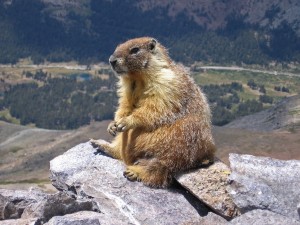 |
| Yellow Bellied Marmots range from southwestern Canada throughout the western United States. They generally occupy open habitats such as steppes, alpine meadows, pastures, gravel-covered fields and forest edge. These marmots prefer to construct their burrows on open, grassy or herb-covered slopes. The marmot’s diet consists of the leaves and blossoms of a great variety of herbaceous plants and grasses. They also consume fruit, grains, legumes, and occasionally insects. They largely forage for seed in the late summer. |
| Click Here for National Park Service’s website |
| Click Here for Nature Mapping Foundation’s website |
Mountain Yellow-Legged Frog (Rana muscosa)
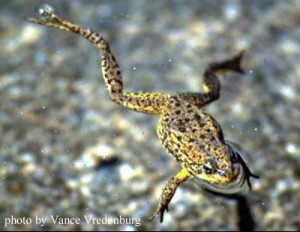 |
| The Mountain Yellow-Legged frog is a rare frog that is distributed across northwestern Nevada. This frog prefers sunny stream banks and undisturbed ponds and lakes. Adults are highly aquatic and are rarely found far from water. Populations are currently under study in the watershed and have been listed as threatened and endangered by the U.S. Fish and Wildlife Service. |
| Click Here for National Park Service’s website |
| Click Here for California Department of Fish and Wildlife’s website |
Black Bear (Ursus americanus)
 |
| Black bears are not always black. They also come in shades of cinnamon and brown. They have large ears a long snout and round head that distinguishes them from grizzly and brown bears. The American black bear is the only bear species occurring naturally in Nevada. Range includes mountainous areas and foothills of Lake Tahoe, the Sierra Nevada Mountains and nearby mountain ranges in extreme western Nevada. Black bears are omnivorous. They will graze on grass and browse on berries and blossoms, dig grubs, catch fish and small mammals and scavenge carrion. Prior to winter hibernation, black bears seek to consume more than 20,000 calories a day in attempt to add 60-80% of its body weight so it can sustain itself through the winter. |
| Click Here for Defenders of Wildlife’s website |
| Click Here for National Park Service’s website |
Striped Skunk (Mephitis mephitis)
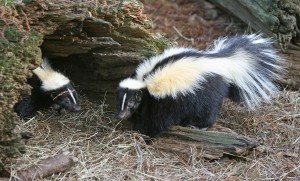 |
| The Striped Skunk can be found in rural areas, agricultural lands, and urban areas in western North America. Adults can grow to about 4 feet long and have black bushy fur with a white stripe from its head to tail. Skunks survive on a diet of reptiles, young birds, small mammals, and eggs. As a defense mechanism, skunks spray any potential enemies. Before they spray, skunks arch their backs, stamp their feet, click their teeth, raise their tails and snarl softly to warn enemies. Those that ignore these warnings get a sprayed, which can cause intense pain, vomiting, and temporary blindness. |
| Click Here for Defenders of Wildlife’s website |
| Click Here for State University of New York’s website |
Barn Owl (Tyto alba)
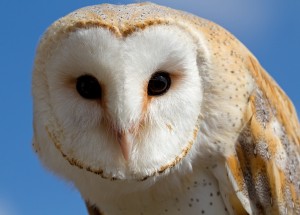 |
| The Barn Owl is distributed throughout North America except in high altitudes. This owl hunts in areas rich in rodents, along desert washes and canyons, where trees for perching are available. The owl nests and roosts in barns and tree cavities. The Barn Owl is primarily white with buff, yellow and tawny shadings. It is delicately freckled with dark specks and the blending of colors in day-light has led some to call it, the "golden owl." When hunting at night, the Barn Owl sweeps fields catching its prey with its long, slender claws. It prefers small mammals but occasionally in winter when mice and gophers are scarce, it will consume small birds. |
| Click Here for Audubon’s website |
| Click Here for Cornell Lab of Ornithology’s website |
Stellar’s Jay (Cyanocitta stelleri)
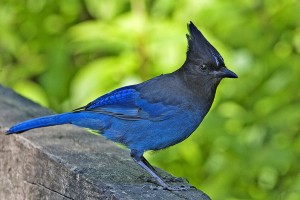 |
| The Stellar’s Jay is distributed across western North America. Stellar’s Jays breed primarily in dense conifer forests, but they use a wider variety of forested habitats at other times of year. Stellar’s Jays are omnivores, and their diets are about 2/3 vegetable-matter and 1/3 animal-matter. The vegetable portion of their diet consists of seeds, nuts, berries, and fruits, and the animal-matter portion consists of bird eggs and nestlings, invertebrates, small rodents, reptiles, and carrion. They eat almost any scraps that humans give them. They appear to be major predators of other bird species’ eggs. |
| Click Here for Audubon’s website |
| Click Here for Cornell Lab of Ornithology’s website |
Pine Martin (Martes Americana)
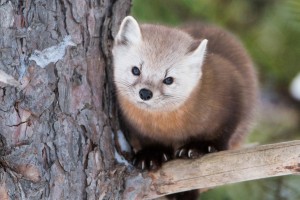 |
| Pine martins are elusive nocturnal, weasel like mammals, found in pine forests and rocky areas. When feeding Pine martens are excellent climbers, and climb with agility in a squirrel-like manner from tree to tree as they search for food sources (such as birds, squirrels, rodents, rabbits, eggs, beetles, berries and even honey). Tracks and droppings indicate the presence of pine martins. Their foot prints are round and cat-like with five toes; claw prints are normally absent as they are only visible in soft ground. |
| Click Here for The Nature Conservancy’s website |
| Click Here for State University of New York’s website |
Red Fox (Vulpes vulpes)
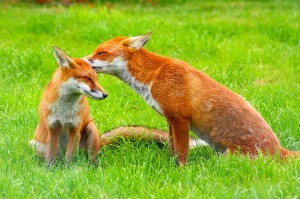 |
| The Red Fox is distributed across North America and can be found on the edges of forests, tilled fields, near marshes, on farmland, beaches, prairies, woodlands, and both alpine and arctic tundra. This small, doglike animal is rusty-red with white under parts, chin and throat. Because of its well-developed sense of hearing, sight, and smell the red fox is an efficient and lethal predator. Being an omnivore it eats whatever is available including corn, berries, apples, grasses, birds and mammals. |
| Click Here for Nature Work’s website |
| Click Here for State University of New York’s website |
White-tailed Jack Rabbit (Lepus townsendii)
